The Market for Lemons
description: 1970 paper by the economist George Akerlof
60 results
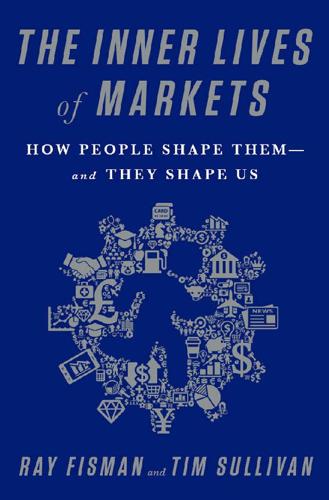
The Inner Lives of Markets: How People Shape Them—And They Shape Us
by
Tim Sullivan
Published 6 Jun 2016
Unlike some other recipients of the prize, he hasn’t used his Nobel to secure guru status in politics or business, nor does he chase after high-paying gigs through consulting or corporate board appointments. He seems, to the best of our observation, content pondering big questions in the relaxed and unhurried manner that’s defined his career: when we e-mailed him to ask if he would talk to us about his classic paper on asymmetric information, “The Market for ‘Lemons,’” he responded, “Sure, happy to talk whenever is good for you.”5 In explaining how he came to do the work that ultimately won him a Nobel Prize, the Berkeley economist recalled his experiences as a PhD student at MIT in the 1960s (in the economics department built by Paul Samuelson). He arrived at graduate school just as economists were starting to get past the extreme abstraction that had ruled the profession in earlier decades.
…
In Akerlof’s view, this was hard to reconcile with extended stretches that many Americans spend without a job, despite a willingness to do just about anything for pay.7 Lots of people do scan the want ads looking for something better than the burger-flipping or telemarketing opportunities that immediately present themselves. But this view of unemployment ignored many of the brutal job market realities experienced by the long-term unemployed that he felt a model should be able to explain. That’s what led him back to the market for lemons, which was a more satisfying framework for understanding why the labor market doesn’t work for so many people. (It wasn’t Akerlof’s last word on why the labor market falls so far short of the Arrow-Debreu ideal, but it was at least a model that he found to be a lot more satisfying than anything that preceded it.).
…
That same logic explains why, if you’re still single by the time you reach a certain age, it becomes harder and harder to convince a potential mate that there isn’t something wrong with you. And so, voilà, you have markets with lots of unsold used cars and lots of unemployed people desperate for a job at any wage. A New Economic Paradigm “The Market for ‘Lemons’” did more than just build the foundation for the field of information economics. It changed the way economists think about models. As we’ve seen, the lemons model doesn’t talk of buyers, sellers, capital, and labor as extreme abstractions, as Akerlof’s immediate predecessors had: there are cars and dealers and customers with money to spend in the used car market.

How Markets Fail: The Logic of Economic Calamities
by
John Cassidy
Published 10 Nov 2009
.”: Garrett Hardin, “The Tragedy of the Commons,” Science 162 (1968): 1244. 150 “Game theorists get . . .”: Binmore, Game Theory, 67. 12. HIDDEN INFORMATION AND THE MARKET FOR LEMONS 151 “I belonged to . . .”: From George Akerlof’s Nobel autobiography, available at http://nobelprize.org/nobel_prizes/economics/laureates/2001/akerlof-autobio.html. 152 “a major reason as to why . . .”: George Akerlof, “Writing ‘The Market for Lemons’: A Personal and Interpretive Essay,” available at http://nobelprize.org/nobel_prizes/economics/articles/akerlof/index.html. 153 “[M]ost cars traded . . .”: George Akerlof, “The Market for ‘Lemons’: Quality Uncertainty and the Market Mechanism,” Quarterly Journal of Economics 84 (1970): 489. 154 “was potentially an issue . . .”: Akerlof, “Writing ‘The Market for Lemons.’ ” 155 “marginally attached”: Bureau of Labor Statistics, Issues in Labor Statistics, Summary 90–04 (April 2009): 1. 156 “it is quite possible . . .”: Akerlof, “The Market for ‘Lemons,’ ” 494. 157 2006 health care spending: “National Health Spending in 2006: A Year of Change for Prescription Drugs,” Health Affairs 27, no. 1 (2008): 14. 158 “The most obvious . . .”: Kenneth J.
…
.”: George Akerlof, “The Market for ‘Lemons’: Quality Uncertainty and the Market Mechanism,” Quarterly Journal of Economics 84 (1970): 489. 154 “was potentially an issue . . .”: Akerlof, “Writing ‘The Market for Lemons.’ ” 155 “marginally attached”: Bureau of Labor Statistics, Issues in Labor Statistics, Summary 90–04 (April 2009): 1. 156 “it is quite possible . . .”: Akerlof, “The Market for ‘Lemons,’ ” 494. 157 2006 health care spending: “National Health Spending in 2006: A Year of Change for Prescription Drugs,” Health Affairs 27, no. 1 (2008): 14. 158 “The most obvious . . .”: Kenneth J. Arrow, “Uncertainty and the Welfare Economics of Medical Care,” American Economic Review 53, no. 5 (December 1963): 948. 158 “the cost of medical care . . .”: Ibid., 961. 158 “Insurance removes the incentive . . .”: Ibid., 962. 159 “really comes down to . . .”: Juan Dubra, “Interview with Kenneth Arrow,” Munich Personal Research Papers in Economics Archive, March 2005, 17, available at http://mpra.ub.uni-muenchen.de/967/1/MPRA_paper_967.pdf. 161 Insurable deposit limits: In October 2008, during the turmoil on Wall Street, the Federal Deposit Insurance Corporation temporarily raised the limit from $100,000 to $250,000.
…
The Mathematics of Bliss 6. The Evangelist 7. The Coin-Tossing View of Finance 8. The Triumph of Utopian Economics PART TWO: REALITY-BASED ECONOMICS 9. The Prof and the Polar Bears 10. A Taxonomy of Failure 11. The Prisoner’s Dilemma and Rational Irrationality 12. Hidden Information and the Market for Lemons 13. Keynes’s Beauty Contest 14. The Rational Herd 15. Psychology Returns to Economics 16. Hyman Minsky and Ponzi Finance PART THREE: THE GREAT CRUNCH 17. Greenspan Shrugs 18. The Lure of Real Estate 19. The Subprime Chain 20. In the Alphabet Soup 21. A Matter of Incentives 22.

Networks, Crowds, and Markets: Reasoning About a Highly Connected World
by
David Easley
and
Jon Kleinberg
Published 15 Nov 2010
In the stock market, either side of a transaction could have information about the future value of the stock that is not known to the other side of the transaction (a feature that we ignored in our earlier discussion of the stock market). In all of these cases, uninformed traders need to form expectations about the value of the good being traded, and these expectations should take into account the behavior of better-informed traders. 22.6. THE MARKET FOR LEMONS 719 22.6 The Market for Lemons At the beginning of the chapter, we started with a simple scenario involving horse-racing and then showed how the resulting principles extended to much larger and more complex systems such as the stock market. For considering the role of asymmetric information, we’ll follow a similar strategy, first developing the case of the used-car market as a simple, stylized example, and then showing how the same principles apply to a range of more complex and fundamental markets.
…
. . . . . . . . . . . . . . . . 299 10.6 Advanced Material: A Proof of the Matching Theorem . . . . . . . . . . . . 300 10.7 Exercises . . . . . . . . . . . . . . . . . . . . . . . . . . . . . . . . . . . . . . 310 11 Network Models of Markets with Intermediaries 319 11.1 Price-Setting in Markets . . . . . . . . . . . . . . . . . . . . . . . . . . . . . 319 11.2 A Model of Trade on Networks . . . . . . . . . . . . . . . . . . . . . . . . . 323 11.3 Equilibria in Trading Networks . . . . . . . . . . . . . . . . . . . . . . . . . 330 11.4 Further Equilibrium Phenomena: Auctions and Ripple Effects . . . . . . . . 334 11.5 Social Welfare in Trading Networks . . . . . . . . . . . . . . . . . . . . . . . 338 11.6 Trader Profits . . . . . . . . . . . . . . . . . . . . . . . . . . . . . . . . . . . 339 11.7 Reflections on Trade with Intermediaries . . . . . . . . . . . . . . . . . . . . 342 11.8 Exercises . . . . . . . . . . . . . . . . . . . . . . . . . . . . . . . . . . . . . . 342 12 Bargaining and Power in Networks 347 12.1 Power in Social Networks . . . . . . . . . . . . . . . . . . . . . . . . . . . . . 347 12.2 Experimental Studies of Power and Exchange . . . . . . . . . . . . . . . . . 350 12.3 Results of Network Exchange Experiments . . . . . . . . . . . . . . . . . . . 352 12.4 A Connection to Buyer-Seller Networks . . . . . . . . . . . . . . . . . . . . . 356 12.5 Modeling Two-Person Interaction: The Nash Bargaining Solution . . . . . . 357 12.6 Modeling Two-Person Interaction: The Ultimatum Game . . . . . . . . . . . 360 12.7 Modeling Network Exchange: Stable Outcomes . . . . . . . . . . . . . . . . 362 12.8 Modeling Network Exchange: Balanced Outcomes . . . . . . . . . . . . . . . 366 12.9 Advanced Material: A Game-Theoretic Approach to Bargaining . . . . . . . 369 12.10Exercises . . . . . . . . . . . . . . . . . . . . . . . . . . . . . . . . . . . . . . 376 IV Information Networks and the World Wide Web 381 13 The Structure of the Web 383 13.1 The World Wide Web . . . . . . . . . . . . . . . . . . . . . . . . . . . . . . 384 13.2 Information Networks, Hypertext, and Associative Memory . . . . . . . . . . 386 13.3 The Web as a Directed Graph . . . . . . . . . . . . . . . . . . . . . . . . . . 394 13.4 The Bow-Tie Structure of the Web . . . . . . . . . . . . . . . . . . . . . . . 397 13.5 The Emergence of Web 2.0 . . . . . . . . . . . . . . . . . . . . . . . . . . . . 400 13.6 Exercises . . . . . . . . . . . . . . . . . . . . . . . . . . . . . . . . . . . . . . 403 6 CONTENTS 14 Link Analysis and Web Search 405 14.1 Searching the Web: The Problem of Ranking . . . . . . . . . . . . . . . . . . 405 14.2 Link Analysis using Hubs and Authorities . . . . . . . . . . . . . . . . . . . 407 14.3 PageRank . . . . . . . . . . . . . . . . . . . . . . . . . . . . . . . . . . . . . 414 14.4 Applying Link Analysis in Modern Web Search . . . . . . . . . . . . . . . . 420 14.5 Applications beyond the Web . . . . . . . . . . . . . . . . . . . . . . . . . . 423 14.6 Advanced Material: Spectral Analysis, Random Walks, and Web Search . . . 425 14.7 Exercises . . . . . . . . . . . . . . . . . . . . . . . . . . . . . . . . . . . . . . 437 15 Sponsored Search Markets 445 15.1 Advertising Tied to Search Behavior . . . . . . . . . . . . . . . . . . . . . . 445 15.2 Advertising as a Matching Market . . . . . . . . . . . . . . . . . . . . . . . . 448 15.3 Encouraging Truthful Bidding in Matching Markets: The VCG Principle . . 452 15.4 Analyzing the VCG Procedure: Truth-Telling as a Dominant Strategy . . . . 457 15.5 The Generalized Second Price Auction . . . . . . . . . . . . . . . . . . . . . 460 15.6 Equilibria of the Generalized Second Price Auction . . . . . . . . . . . . . . 464 15.7 Ad Quality . . . . . . . . . . . . . . . . . . . . . . . . . . . . . . . . . . . . 467 15.8 Complex Queries and Interactions Among Keywords . . . . . . . . . . . . . 469 15.9 Advanced Material: VCG Prices and the Market-Clearing Property . . . . . 470 15.10Exercises . . . . . . . . . . . . . . . . . . . . . . . . . . . . . . . . . . . . . . 486 V Network Dynamics: Population Models 489 16 Information Cascades 491 16.1 Following the Crowd . . . . . . . . . . . . . . . . . . . . . . . . . . . . . . . 491 16.2 A Simple Herding Experiment . . . . . . . . . . . . . . . . . . . . . . . . . . 493 16.3 Bayes’ Rule: A Model of Decision-Making Under Uncertainty . . . . . . . . . 497 16.4 Bayes’ Rule in the Herding Experiment . . . . . . . . . . . . . . . . . . . . . 502 16.5 A Simple, General Cascade Model . . . . . . . . . . . . . . . . . . . . . . . . 504 16.6 Sequential Decision-Making and Cascades . . . . . . . . . . . . . . . . . . . 508 16.7 Lessons from Cascades . . . . . . . . . . . . . . . . . . . . . . . . . . . . . . 511 16.8 Exercises . . . . . . . . . . . . . . . . . . . . . . . . . . . . . . . . . . . . . . 513 17 Network Effects 517 17.1 The Economy Without Network Effects . . . . . . . . . . . . . . . . . . . . . 518 17.2 The Economy with Network Effects . . . . . . . . . . . . . . . . . . . . . . . 522 17.3 Stability, Instability, and Tipping Points . . . . . . . . . . . . . . . . . . . . 525 17.4 A Dynamic View of the Market . . . . . . . . . . . . . . . . . . . . . . . . . 527 17.5 Industries with Network Goods . . . . . . . . . . . . . . . . . . . . . . . . . 534 17.6 Mixing Individual Effects with Population-Level Effects . . . . . . . . . . . . 536 17.7 Advanced Material: Negative Externalities and The El Farol Bar Problem . 541 17.8 Exercises . . . . . . . . . . . . . . . . . . . . . . . . . . . . . . . . . . . . . . 549 CONTENTS 7 18 Power Laws and Rich-Get-Richer Phenomena 553 18.1 Popularity as a Network Phenomenon . . . . . . . . . . . . . . . . . . . . . . 553 18.2 Power Laws . . . . . . . . . . . . . . . . . . . . . . . . . . . . . . . . . . . . 555 18.3 Rich-Get-Richer Models . . . . . . . . . . . . . . . . . . . . . . . . . . . . . 557 18.4 The Unpredictability of Rich-Get-Richer Effects . . . . . . . . . . . . . . . . 559 18.5 The Long Tail . . . . . . . . . . . . . . . . . . . . . . . . . . . . . . . . . . . 561 18.6 The Effect of Search Tools and Recommendation Systems . . . . . . . . . . . 564 18.7 Advanced Material: Analysis of Rich-Get-Richer Processes . . . . . . . . . . 565 18.8 Exercises . . . . . . . . . . . . . . . . . . . . . . . . . . . . . . . . . . . . . . 569 VI Network Dynamics: Structural Models 571 19 Cascading Behavior in Networks 573 19.1 Diffusion in Networks . . . . . . . . . . . . . . . . . . . . . . . . . . . . . . . 573 19.2 Modeling Diffusion through a Network . . . . . . . . . . . . . . . . . . . . . 575 19.3 Cascades and Clusters . . . . . . . . . . . . . . . . . . . . . . . . . . . . . . 583 19.4 Diffusion, Thresholds, and the Role of Weak Ties . . . . . . . . . . . . . . . 588 19.5 Extensions of the Basic Cascade Model . . . . . . . . . . . . . . . . . . . . . 590 19.6 Knowledge, Thresholds, and Collective Action . . . . . . . . . . . . . . . . . 593 19.7 Advanced Material: The Cascade Capacity . . . . . . . . . . . . . . . . . . . 597 19.8 Exercises . . . . . . . . . . . . . . . . . . . . . . . . . . . . . . . . . . . . . . 613 20 The Small-World Phenomenon 621 20.1 Six Degrees of Separation . . . . . . . . . . . . . . . . . . . . . . . . . . . . 621 20.2 Structure and Randomness . . . . . . . . . . . . . . . . . . . . . . . . . . . . 622 20.3 Decentralized Search . . . . . . . . . . . . . . . . . . . . . . . . . . . . . . . 626 20.4 Modeling the Process of Decentralized Search . . . . . . . . . . . . . . . . . 629 20.5 Empirical Analysis and Generalized Models . . . . . . . . . . . . . . . . . . 632 20.6 Core-Periphery Structures and Difficulties in Decentralized Search . . . . . . 638 20.7 Advanced Material: Analysis of Decentralized Search . . . . . . . . . . . . . 640 20.8 Exercises . . . . . . . . . . . . . . . . . . . . . . . . . . . . . . . . . . . . . . 652 21 Epidemics 655 21.1 Diseases and the Networks that Transmit Them . . . . . . . . . . . . . . . . 655 21.2 Branching Processes . . . . . . . . . . . . . . . . . . . . . . . . . . . . . . . 657 21.3 The SIR Epidemic Model . . . . . . . . . . . . . . . . . . . . . . . . . . . . . 660 21.4 The SIS Epidemic Model . . . . . . . . . . . . . . . . . . . . . . . . . . . . . 666 21.5 Synchronization . . . . . . . . . . . . . . . . . . . . . . . . . . . . . . . . . . 669 21.6 Transient Contacts and the Dangers of Concurrency . . . . . . . . . . . . . . 672 21.7 Genealogy, Genetic Inheritance, and Mitochondrial Eve . . . . . . . . . . . . 676 21.8 Advanced Material: Analysis of Branching and Coalescent Processes . . . . . 682 21.9 Exercises . . . . . . . . . . . . . . . . . . . . . . . . . . . . . . . . . . . . . . 695 8 CONTENTS VII Institutions and Aggregate Behavior 699 22 Markets and Information 701 22.1 Markets with Exogenous Events . . . . . . . . . . . . . . . . . . . . . . . . . 702 22.2 Horse Races, Betting, and Beliefs . . . . . . . . . . . . . . . . . . . . . . . . 704 22.3 Aggregate Beliefs and the “Wisdom of Crowds” . . . . . . . . . . . . . . . . 710 22.4 Prediction Markets and Stock Markets . . . . . . . . . . . . . . . . . . . . . 714 22.5 Markets with Endogenous Events . . . . . . . . . . . . . . . . . . . . . . . . 717 22.6 The Market for Lemons . . . . . . . . . . . . . . . . . . . . . . . . . . . . . 719 22.7 Asymmetric Information in Other Markets . . . . . . . . . . . . . . . . . . . 724 22.8 Signaling Quality . . . . . . . . . . . . . . . . . . . . . . . . . . . . . . . . . 728 22.9 Quality Uncertainty On-Line: Reputation Systems and Other Mechanisms . 729 22.10Advanced Material: Wealth Dynamics in Markets . . . . . . . . . . . . . . . 732 22.11Exercises . . . . . . . . . . . . . . . . . . . . . . . . . . . . . . . . . . . . . . 740 23 Voting 745 23.1 Voting for Group Decision-Making . . . . . . . . . . . . . . . . . . . . . . . 745 23.2 Individual Preferences . . . . . . . . . . . . . . . . . . . . . . . . . . . . . . 747 23.3 Voting Systems: Majority Rule . . . . . . . . . . . . . . . . . . . . . . . . . 750 23.4 Voting Systems: Positional Voting . . . . . . . . . . . . . . . . . . . . . . . . 755 23.5 Arrow’s Impossibility Theorem . . . . . . . . . . . . . . . . . . . . . . . . . 758 23.6 Single-Peaked Preferences and the Median Voter Theorem . . . . . . . . . . 760 23.7 Voting as a Form of Information Aggregation . . . . . . . . . . . . . . . . . . 766 23.8 Insincere Voting for Information Aggregation . . . . . . . . . . . . . . . . . . 768 23.9 Jury Decisions and the Unanimity Rule . . . . . . . . . . . . . . . . . . . . . 771 23.10Sequential Voting and the Relation to Information Cascades . . . . . . . . . 776 23.11Advanced Material: A Proof of Arrow’s Impossibility Theorem . . . . . . . . 777 23.12Exercises . . . . . . . . . . . . . . . . . . . . . . . . . . . . . . . . . . . . . . 782 24 Property Rights 785 24.1 Externalities and the Coase Theorem . . . . . . . . . . . . . . . . . . . . . . 785 24.2 The Tragedy of the Commons . . . . . . . . . . . . . . . . . . . . . . . . . . 790 24.3 Intellectual Property . . . . . . . . . . . . . . . . . . . . . . . . . . . . . . . 793 24.4 Exercises . . . . . . . . . . . . . . . . . . . . . . . . . . . . . . . . . . . . . . 796 Chapter 1 Overview Over the past decade there has been a growing public fascination with the complex “connectedness” of modern society.
…
In focusing first on used cars, we’re following the rhetorical lead of the economist George Akerlof, who published a foundational paper on asymmetric information [10] for which he shared the 2001 Nobel Prize in Economics. His leading example in the paper was the market for used cars — or, as he called it, the “market for lemons.” (A used car that is particularly bad is called a lemon.) The idea behind this phrase is old, probably as old as trading itself, but Akerlof was the first to clearly articulate the underlying principle and its implications for how markets work — or, in some cases, how they fail to work. Once we develop the basic ideas for the example of the used car market, we will then discuss how to apply these ideas to other markets.

Economics Rules: The Rights and Wrongs of the Dismal Science
by
Dani Rodrik
Published 12 Oct 2015
Instead, in this new style, the economic model is customized to describe the salient features of reality that describe the special problem under consideration. Perfect competition is only one model among many, although itself an interesting special case. Since the ‘Market for “Lemons”’ [the research that won Akerlof his Nobel Prize] was an early paper in this new style of economics, its origins and history are a saga in that change.” Akerlof, “Writing the ‘The Market for “Lemons”’: A Personal and Interpretive Essay” (2001 Nobel Prize lecture), http://www.nobelprize.org/nobel_prizes/economic-sciences/laureates/2001/akerlof-article.html?utm_source=facebook&utm_medium=social&utm_campaign=facebook_page. ‡‡ This is the famous Israeli day care center experiment reported in Uri Gneezy and Aldo Rustichini, “A Fine Is a Price,” Journal of Legal Studies 29, no. 1 (January 2000): 1–17.
…
Economists Agree the Stimulus Lifted the Economy” (Wolfers), 135n “When Economics Students Rebel” (Wren-Lewis), 197n White, Harry Dexter, 1–2 white flight, segregation and, 42 “Why We Learn Nothing from Regressing Economic Growth on Policies” (Rodrik), 35n Wicksell, Knut, 119 Williamson, John, 159–60 Wolfers, Justin, 135n World Bank, 1n, 2, 87 Washington Consensus and, 160 World War II, 2n, 108, 165 Wren-Lewis, Simon, 197n, 198 “Writing ‘The Market for “Lemons”‘: A Personal and Interpretive Essay” (Akerlof), 69n W. W. Norton, xiv–xv Wylie, Andrew, xiv Yale University, 103, 107, 109 ALSO BY DANI RODRIK The Globalization Paradox: Democracy and the Future of the World Economy One Economics, Many Recipes: Globalization, Institutions, and Economic Growth Has Globalization Gone Too Far?
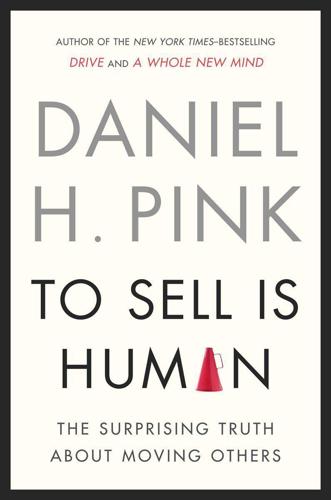
To Sell Is Human: The Surprising Truth About Moving Others
by
Daniel H. Pink
Published 1 Dec 2012
Rosabeth Moss Kanter, “The ‘White Coat’ Economy of Massachusetts,” Boston Globe, May 9, 2006; Derek Thompson, “America 2020: Health Care Nation,” Atlantic, August 17, 2010, available at http://www.theatlantic.com/business/archive/2010/08/america-2020-health-care-nation/61647/. CHAPTER 3. FROM CAVEAT EMPTOR TO CAVEAT VENDITOR 1. George A. Akerlof, “Writing ‘The Market for “Lemons’”: A Personal and Interpretive Essay,” available at http://www.nobelprize.org/nobel_prizes/economics/laureates/2001/akerlof-article.html. 2. George A. Akerlof, “The Market for ‘Lemons’: Quality Uncertainty and the Market Mechanism,” Quarterly Journal of Economics 84, no. 3 (August 1970): 488–500. 3. Ibid, 489. 4. Joe Girard with Stanley H. Brown, How to Sell Anything to Anybody (New York: Fireside, 2006; 1977), 6. 5.
…
The first two academic journals where young Akerlof submitted his paper rejected it because they “did not publish papers on topics of such triviality.”1 The third journal also turned down Akerlof’s study, but on different grounds. Its reviewers didn’t say his analysis was trivial; they said it was mistaken. Finally, two years after he’d completed the paper, The Quarterly Journal of Economics accepted it and in 1970 published “The Market for ‘Lemons’: Quality Uncertainty and the Market Mechanism.” Akerlof’s article went on to become one of the most cited economics papers of the last fifty years. In 2001, it earned him a Nobel Prize. In the paper, Akerlof identified a weakness in traditional economic reasoning. Most analyses in economics began by assuming that the parties to any transaction were fully informed actors making rational decisions in their own self-interest.

Machine, Platform, Crowd: Harnessing Our Digital Future
by
Andrew McAfee
and
Erik Brynjolfsson
Published 26 Jun 2017
Changes in Taxi Ridership and Revenue in Los Angeles 2009–2014,” Policy Brief, July 2015, table 1, p. 3, http://www.irle.ucla.edu/publications/documents/Taxi-Policy-Brief.pdf. 201 Yellow Cab Cooperative, filed for bankruptcy: Tom Corrigan, “San Francisco’s Biggest Taxi Operator Seeks Bankruptcy Protection,” Wall Street Journal, January 24, 2016, https://www.wsj.com/articles/san-franciscos-biggest-taxi-operator-seeks-bankruptcy-protection-1453677177. 201 Less than three years later: Simon Van Zuylen-Wood, “The Struggles of New York City’s Taxi King,” Bloomberg BusinessWeek, August 27, 2015, https://www.bloomberg.com/features/2015-taxi-medallion-king. 202 Lawmakers in France: “Uber Fined in France over UberPop,” BBC News, June 9, 2016, http://www.bbc.com/news/business-36491926. 202 In June 2015 the Economist: “Why Fintech Won’t Kill Banks,” Economist, June 17, 2015, http://www.economist.com/blogs/economist-explains/2015/06/economist-explains-12. 202 “a future as a sort of financial utility”: Ibid. 203 $45 billion: Juro Osawa, Gillian Wong, and Rick Carew, “Xiaomi Becomes World’s Most Valuable Tech Startup,” Wall Street Journal, last modified December 29, 2014, https://www.wsj.com/articles/xiaomi-becomes-worlds-most-valuable-tech-startup-1419843430. 203 Xiaomi had sold 61 million smartphones: Eva Dou, “China’s Xiaomi under Pressure to Prove Value to Investors,” Wall Street Journal, January 10, 2016, https://www.wsj.com/articles/chinas-xiaomi-under-pressure-to-prove-value-to-investors-1452454204. 203 typically selling for $149 in 2015: Eva Dou, “Xiaomi Ends 2015 as China’s Smartphone King,” Wall Street Journal, February 1, 2016, http://blogs.wsj.com/digits/2016/02/01/xiaomi-ends-2015-as-chinas-smartphone-king. 203 less than 5% of revenue: Kevin Kelleher, “Once a Darling, Xiaomi Is Facing Tough Questions about Its Future,” Time, March 21, 2016, http://time.com/4265943/xiaomi-slowdown. 203 Xiaomi’s sales had dropped by almost 40%: David Gilbert, “How Xiaomi Lost $40bn: Where It All Went Wrong for the ‘Apple of the East,’ ” International Business Times, August 18, 2016, http://www.ibtimes.co.uk/how-xiaomi-lost-40bn-where-it-all-went-wrong-apple-east-1576781. 203 closer to $3.6 billion: Ibid. 204 Total unit sales in 2016: James Titcomb, “Samsung Mobile Phone Sales Fall to Lowest Level in Five Years,” Telegraph, January 24, 2017, http://www.telegraph.co.uk/technology/2017/01/24/samsung-mobile-phone-sales-fall-lowest-level-five-years. 204 Apple captured 91% of global smartphone profits: Philip Elmer-DeWitt, “How Apple Sucks the Profit Out of Mobile Phones,” Fortune, February 14, 2016, http://fortune.com/2016/02/14/apple-mobile-profit-2015. 204 analyst Tim Long of BMO Capital Markets estimated: Mikey Campbell, “Apple Captures More than 103% of Smartphone Profits in Q3 despite Shrinking Shipments,” November 3, 2016, http://appleinsider.com/articles/16/11/03/apple-captures-more-than-103-of-smartphone-profits-in-q3-despite-shrinking-shipments. 204 $22 billion in profits: Joel Rosenblatt and Jack Clark, “Google’s Android Generates $31 Billion Revenue, Oracle Says,” Bloomberg, January 21, 2016, https://www.bloomberg.com/news/articles/2016-01-21/google-s-android-generates-31-billion-revenue-oracle-says-ijor8hvt. 207 “The Market for ‘Lemons’ ”: George A. Akerlof, “The Market for ‘Lemons’: Quality Uncertainty and the Market Mechanism,” Quarterly Journal of Economics 84, no. 3 (1970): 488–500, https://doi.org/10.2307/1879431. 207 “did not publish papers”: George A. Akerlof, “Writing the ‘The Market for “Lemons”’: A Personal and Interpretive Essay,” Nobelprize.org, November 14, 2003, http://www.nobelprize.org/nobel_prizes/economic-sciences/laureates/2001/akerlof-article.html. 207 “if this paper were correct”: Ibid. 207 50 million rides per month: Eric Newcomer, “Lyft Is Gaining on Uber as It Spends Big for Growth,” Bloomberg, last modified April 14, 2016, https://www.bloomberg.com/news/articles/2016-04-14/lyft-is-gaining-on-uber-as-it-spends-big-for-growth. 208 In 2013, California passed regulations: Tomio Geron, “California Becomes First State to Regulate Ridesharing Services Lyft, Sidecar, UberX,” Forbes, September 19, 2013, http://www.forbes.com/sites/tomiogeron/2013/09/19/california-becomes-first-state-to-regulate-ridesharing-services-lyft-sidecar-uberx/#6b22c10967fe. 208 by August 2016, BlaBlaCar still did not require them: BlaBlaCar, “Frequently Asked Questions: Is It Safe for Me to Enter My Govt.
…
This is a shame, because at least some of the passed-up deals actually would have been advantageous for both parties. Knowledge differentials, unfortunately, kept these transactions from happening. The idea that such “information asymmetries” are harmful not just for the less informed party but also for markets overall was formalized by economist George Akerlof in his classic 1970 paper “The Market for ‘Lemons.’ ” Akerlof showed that the used-car market could suffer greatly because of the existence of “lemons”‡—apparently fine cars that, in fact, had bad mechanical problems. Sellers know which cars are lemons but most buyers don’t, and this information asymmetry will keep the used-car market small and inefficient unless it’s addressed by, for example, having dealers offer money-back guarantees to customers who feel that they’ve been cheated.
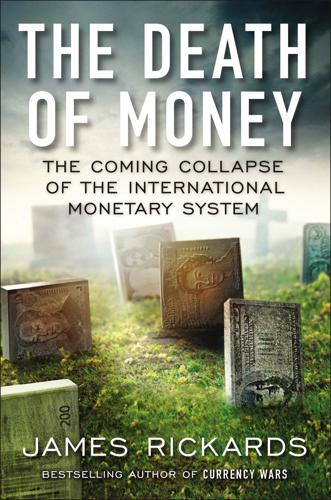
The Death of Money: The Coming Collapse of the International Monetary System
by
James Rickards
Published 7 Apr 2014
. : This analysis is based on data and reporting in Buttonwood, “The Real Deal—Low Real Interest Rates Are Usually Bad News for Equity Markets,” Economist, October 20, 2012, http://www.economist.com/news/finance-and-economics/21564845-low-real-interest-rates-are-usually-bad-news-equity-markets. “The Market for ‘Lemons’”: George A. Akerlof, “The Market for ‘Lemons’: Quality Uncertainty and the Market Mechanism,” Quarterly Journal of Economics 84, no. 3 (August 1970), pp. 488–500. “Irreversibility, Uncertainty . . .”: Ben S. Bernanke, “Irreversibility, Uncertainty, and Cyclical Investment,” National Bureau of Economic Research, Cambridge, Mass., July 1980, http://www.nber.org/papers/w502.
…
The policy debate over forward guidance as an adjunct to market manipulation is a continuation of one of the most long-standing areas of intellectual inquiry in modern economics. This inquiry involves imperfect information or information asymmetry: a situation in which one party has superior information to another that induces suboptimal behavior by both parties. This field took flight with a 1970 paper by George Akerlof, “The Market for ‘Lemons,’” that chose used car sales as an example to make its point. Akerlof was awarded the Nobel Prize in Economics in 2001 in part for this work. The seller of a used car, he states, knows perfectly well whether the car runs smoothly or is of poor quality, a “lemon.” The buyer does not know; hence an information asymmetry arises between buyer and seller.
…
Author Jonah Goldberg has documented fascism’s history . . . : Jonah Goldberg, Liberal Fascism: The Secret History of the American Left from Mussolini to the Politics of Meaning (New York: Doubleday, 2008). More ominous was his remark . . . : Quoted in Balko, Warrior Cop, p. 333. SELECTED SOURCES ARTICLES Akerlof, George A. “The Market for ‘Lemons’: Quality Uncertainty and the Market Mechanism.” Quarterly Journal of Economics 84, no. 3 (August 1970), pp. 488–500. Alderman, Liz. “Under Chinese, a Greek Port Thrives.” New York Times, October 19, 2012, http://www.nytimes.com/2012/10/11/business/global/chinese-company-sets-new-rhythm-in-port-of-piraeus.html.

Markets, State, and People: Economics for Public Policy
by
Diane Coyle
Published 14 Jan 2020
This process is known as adverse selection—in the extreme, the market can collapse as ultimately only lemons are offered for sale. Even though everyone would be better off if trades take place, there can end up being no sales occurring because of adverse selection. Of course as a tale about second-hand cars, the market for lemons model is unrealistic because in real life these get bought and sold a lot. The point of the model is to highlight the role of the various mechanisms for accommodating the information asymmetry. Here are some examples: • Second-hand car dealers can build a reputation for fair dealing through investing in showrooms, offering mechanical inspections, promising money-back guarantees and so on
…
Further Reading Technical Follow-Up Massimo Motta (2004), Competition Policy: Theory and Practice, Cambridge University Press. Jean Tirole (2014), “Market Power and Regulation,” scientific background to the Nobel Prize announcement, http://idei.fr/sites/default/files/medias/doc/by/tirole/scientific_background_economics_nobel_2014.pdf. Classics George A. Akerlof (1970), “The Market for ‘Lemons’: Quality Uncertainty and the Market Mechanism,” Quarterly Journal of Economics 84, no. 3 (August): 488–500. Robert Bork (1978), The Antitrust Paradox, Free Press. On Competition Policy Michael Grenfell (2017), “What Has Competition Ever Done for Us?,” speech, http://www.regulation.org.uk/library/2017-What_has_Competition_ever_Done_for_us.pdf.
…
Insurance markets are viable for differentiated individual risks, when these can be pooled across as varied a group as possible; but not for major aggregate risks. Hence the state always has to step in to compensate people for large-scale disasters, such as floods and terrorism. Events such as these are explicitly excluded from standard insurance policies. It is similar with the downturns of the business cycle. Recall from chapter 2 the market for lemons model: if there is a big enough risk of the bad outcome (a dodgy car, a recession), and individuals do not know what situation they will be in (are they buying a lemon or not—or in the present context, whether or not they will be unemployed or seriously ill), the market may not exist. It is possible to buy some private income insurance as an individual, but generally for individuals for whom the risk of making a claim is quite low; and anyway such policies are costly.
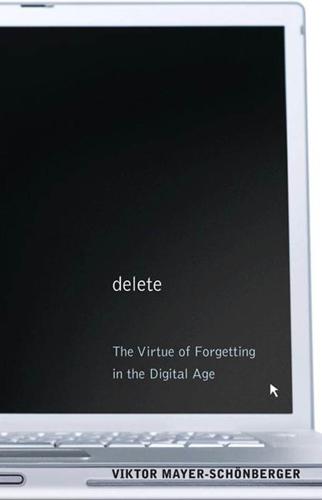
Delete: The Virtue of Forgetting in the Digital Age
by
Viktor Mayer-Schönberger
Published 1 Jan 2009
This rests on the view that where information asymmetries persist, markets could become inefficient. Buyers could end up with low-quality goods they paid too high a price for—an inefficient allocation of resources. And if buying again, they may choose a good with the lowest price, knowing they do not know quality (see Akerlof, “The Market for ‘Lemons’: Quality Uncertainty and the Market Mechanism,” 488–500). Or market participants could hide some of their qualities to obtain a good or service at a price they otherwise would not be able to. Third, market participants could hide their intention to change their behavior when it is the basis of the transaction (think of a person who begins to drive recklessly after having taken out comprehensive car insurance).
…
Bibliography Agre, Phil and Marc Rotenberg, eds. Technology and Privacy: The New Landscape. Cambridge, MA: MIT Press. 1997. Aimone, James B., Janet Wiles, and Fred H. Gage. “Computational Influence of Adult Neurogenesis on Memory Encoding.” Neuron 61 (2009): 187–202. Akerlof, George A. “The Market for ‘Lemons’: Quality Uncertainty and the Market Mechanism.” Quarterly Journal of Economics 84 (1970): 488–500. Anderson, Benedict. Imagined Communities. rev. ed. London: Verso. 1991. Anderson, J. R. and L. J. Schooler. “Reflections of the Environment in Memory.” Psychological Science 2 (1991): 396–408.
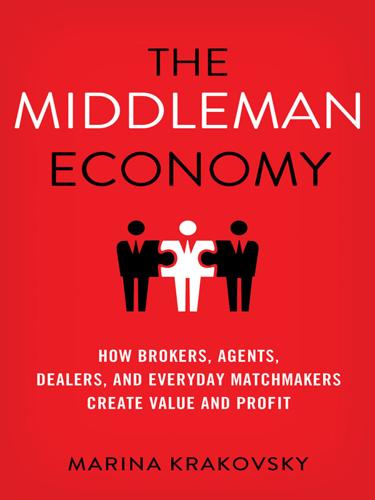
The Middleman Economy: How Brokers, Agents, Dealers, and Everyday Matchmakers Create Value and Profit
by
Marina Krakovsky
Published 14 Sep 2015
As a result, honest sellers (unable to show that they are honest) would have trouble getting a good price for their goods, driving some of them out of the market—a decision that leaves the market overpopulated with dishonest sellers, which further erodes buyers’ trust and prices and so on in a vicious cycle called “adverse selection.”26 The original paper about adverse selection, “The Market for Lemons,” dealt with the case of used cars, but the phenomenon is so pervasive, rearing its head in important markets like those for insurance, that the economist behind the lemons model, George Akerlof, eventually earned a Nobel Prize for this insight.27 The lemons problem explains why middlemen so often appear in markets for used goods: they not only have the expertise to judge quality, but they can vouch for it with their reputation.
…
Cannon, “An Examination of the Nature of Trust in Buyer-Seller Relationships,” Journal of Marketing 61, no. 2 (April 1997): 35–51. 26.In insurance contexts, the vicious cycle is sometimes called the death spiral. See David M. Cutler and Richard J. Zeckhauser, “Adverse Selection in Health Insurance,” Forum for Health Economics & Policy (1998). 27.George A. Akerlof, “The Market for ‘Lemons’: Quality Uncertainty and the Market Mechanism,” The Quarterly Journal of Economics 84, no. 3 (August 1970): 488–500. 28.Joel Grover and Matt Goldberg, “False Claims, Lies Caught on Tape at Farmers Markets,” NBC Los Angeles, September 23, 2010. 29.Shoshana Walter, “Farm Fakes: A History of Fraudulent Food,” Modern Farmer, May 3, 2013. 30.Specifically, the bill created a way for the markets to tax vendors at farmers’ markets to fund these outside inspectors.
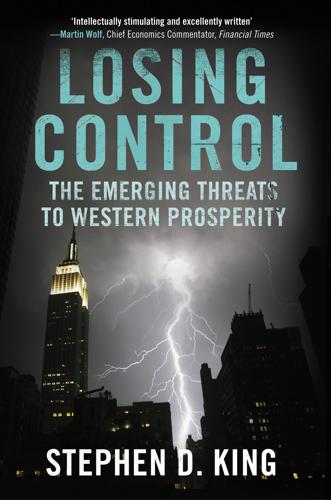
Losing Control: The Emerging Threats to Western Prosperity
by
Stephen D. King
Published 14 Jun 2010
For an informed discussion of the client state problem, see Tony Judt’s Post War: A History of Europe since 1945 (William Heinemann, London, 2005). 8. An Inquiry into the Nature and Causes of the Wealth of Nations, first published in 1776. As it turned out, this was a remarkably auspicious year for political and economic developments. 9. See, for example, ‘The market for lemons: quality uncertainty and the market mechanism’, the groundbreaking paper by George A. Akerlof, Quarterly Journal of Economics, 84.3 (1970), pp. 488–500. 10. For an interesting modern discussion of the role of ‘good government’, see Timothy Besley’s ‘ ‘Principled Agents?’ The Political Economy of Good Government’, The Lindahl Lectures (Oxford, 2006).
…
The classic modern-day texts on these issues include John Rawls, A Theory of Justice (Harvard University Press, Cambridge, MA, 1971) and Robert Nozick, Anarchy, State and Utopia (Basic Books, New York, 1974). SELECT BIBLIOGRAPHY Aherne, A., Gagnon, J., Haltmaier, J. and Kamin, S., Preventing Deflation: Lessons from Japan’s Experience in the 1990s, Federal Reserve International Finance Discussion Paper, Washington DC, 2002 Akerlof, G., ‘The market for lemons: quality uncertainty and the market mechanism’, Quarterly Journal of Economics, 84.3 (1970), pp. 488–500 Balassa, B., ‘The purchasing power doctrine: a reappraisal’, Journal of Political Economy, 72 (1964), pp. 584–96 Barbone, L., Bontch-Osmolovssky, M. and Zaidi, S., The Foreign-born Population in the European Union and its Contribution to National Tax and Benefit Systems, World Bank, Washington, DC, April 2009 Baumol, W., Litan, R. and Schramm, C., Good Capitalism, Bad Capitalism and the Economics of Growth and Prosperity, Yale University Press, New Haven, 2007 Bernanke, B., The Great Moderation, Federal Reserve, Washington DC, 2004 ———, The Global Savings Glut, Federal Reserve, Washington DC, 2005 Besley, T., ‘Principled Agents?

Grave New World: The End of Globalization, the Return of History
by
Stephen D. King
Published 22 May 2017
King, The End of Alchemy: Money, banking and the future of the global economy, Little, Brown, London, 2016. 13.Sherman McCoy, the protagonist in Wolfe’s Bonfire of the Vanities, is a Wall Street trader whose life goes horribly wrong just when it seemed to be going so well: he was a self-styled Master of the Universe. 14.For a discussion of the effects of dysfunctional belief systems, see R. Hausmann, ‘Through the Venezuelan looking glass’, Project Syndicate, August 2016, available at: https://www.project-syndicate.org/commentary/venezuela-destructive-belief-systems-by-ricardo-hausmann-2016-08 15.The classic article on asymmetric information is George Akerlof, ‘The market for lemons: Quality, uncertainty and the market mechanism’, Quarterly Journal of Economics, 84:3 (1970), pp. 488–500. 16.See, for example, E. Passari and H. Rey, Financial Flows and the International Monetary System, National Bureau of Economic Research Working Paper No. 21172, Cambridge, MA, May 2015. 17.The pre-2000 figures come from M.
…
The Bankers’ New Clothes: What’s wrong with banking and what to do about it, Princeton University Press, Princeton, NJ, 2013 Ahmed, S., M. Appendino and M. Ruta. Depreciations without Exports? Global value chains and the exchange rate elasticity of exports, Policy Research Working Paper No. 7390, World Bank, Washington, DC, August 2015 Akerlof, G. ‘The market for lemons: Quality, uncertainty and the market mechanism’, Quarterly Journal of Economics, 84:3 (1970), pp. 488–500 Alesina, A., A. Devleeschauwer, W. Easterly, S. Kurlat and R. Wacziarg. Fractionalization, Harvard Institute of Economic Research Discussion Paper No. 1959, Cambridge, MA, June 2002, available at: https://dash.harvard.edu/handle/1/4553003 Andrews, D., C.
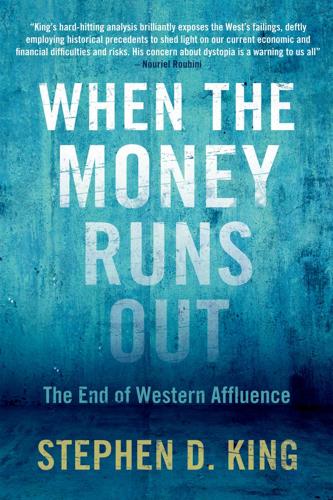
When the Money Runs Out: The End of Western Affluence
by
Stephen D. King
Published 17 Jun 2013
Krugman, End This Depression Now!. 22. Source: OECD Economic Outlook 2012. 23. P. Krugman, ‘Dubya's Double Dip?’, New York Times, 2 Aug. 2002, at http://www.nytimes.com/2002/08/02/opinion/dubya-s-double-dip.html (accessed Jan. 2013). CHAPTER 6: LOSS OF TRUST, LOSS OF GROWTH 1. G. Akerlof, ‘The Market for “Lemons”: Quality Uncertainty and the Market Mechanism’, Quarterly Journal of Economics, 84.3 (Aug. 1970): 488–500. 2. J. Wood and P. Berg, ‘Rebuilding Trust in Banks’, Gallup Business Journal, at http://businessjournal.gallup.com/content/148049/rebuilding-trust-banks.aspx#2 (accessed Jan. 2013). 3.
…
Why Nations Fail: The Origins of Power, Prosperity and Poverty, Crown, New York, 2012 Ahamad, L. Lords of Finance, Random House, New York, 2009 Aherne, A., Gagnon, J., Haltmaier, J. and Kamin, S. ‘Preventing Deflation: Lessons from Japan's Experience in the 1990s’, Federal Reserve International Finance Discussion Paper, Washington, DC, 2002 Akerlof, G. ‘The Market for “Lemons”: Quality Uncertainty and the Market Mechanism’, Quarterly Journal of Economics, 84.3 (Aug. 1970): 488–500 ‘A Makeshift Budget’, The Times, 28 Apr. 1931 ‘An Emergency Budget’, The Times, 11 Sept. 1931 Arrow. K. J. The Limits of Organization, The Fels Lectures on Public Policy Analysis, Norton, New York, 1974 Bacon, J.

A Pelican Introduction Economics: A User's Guide
by
Ha-Joon Chang
Published 26 May 2014
Another way to put it is to say that a society is in a state of Pareto optimality if no one can be made better off without making someone worse off. 7. In Akerlof’s classic example of ‘the market for lemons’, given the difficulty of ascertaining the quality of used cars before purchase, prospective buyers will not be willing to stump up good money even for what is a truly good second-hand car. Given this, owners of good used cars will shun the market, lowering the average quality of cars further, leading, in the extreme case, to the disappearance of the market itself. See G. Akerlof, ‘The market for “lemons”: quality uncertainty and the market mechanism’, Quarterly Journal of Economics, vol. 84, no. 4 (1970). 8.

State-Building: Governance and World Order in the 21st Century
by
Francis Fukuyama
Published 7 Apr 2004
In any event, the art of state-building will be a key component of national power, as important as the ability to deploy traditional military force to the maintenance of world order. bibliography Akerlof, George A. 1982. “Labor Contracts as Partial Gift Exchange,” Quarterly Journal of Economics 47(4): 543–69. ——. 1970. “The Market for ‘Lemons’: Quality Uncertainty and the Market Mechanism,” Quarterly Journal of Economics 84: 488–500. Alchian, Armen A. 1950. “Uncertainty, Evolution, and Economic Theory,” Journal of Political Economy 58: 211–21. Alchian, Armen A., and Demsetz, H. 1972. “Production, Information Costs, and Economic Organization,” American Economic Review 62(5): 777–95.
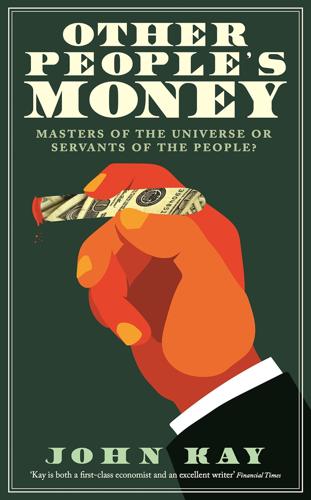
Other People's Money: Masters of the Universe or Servants of the People?
by
John Kay
Published 2 Sep 2015
Sinclair, U., 1994, I, Candidate for Governor: And How I Got Licked (originally published 1935), London, University of California Press, p. 109. 3: Intermediation 1. McCardie, J., Armstrong v. Jackson (1917) 2KB 822. 2. George Akerlof employed the used car market as an example to highlight how markets can break down when information asymmetry is present in his classic 1970 article: Akerlof, G.A., 1970, ‘The Market for “Lemons”: Quality Uncertainty and the Market Mechanism’, Quarterly Journal of Economics, 84 (3), pp. 488–500. 3. Shiller, R.J., 1981, ‘Do Stock Prices Move Too Much to Be Justified by Subsequent Changes in Dividends?’, The American Economic Review, 71 (3), June, pp. 421–36. 4. Kay, J., 2012, ‘The Kay Review of UK Equity Markets and Long-Term Decision Making’, Final Report, https://www.gov.uk/government/uploads/system/uploads/attachment_data/file/253454/bis-12–917-kay-review-of-equity-markets-final-report.pdf. 5.
…
Adams, J., 1995, Risk: The Policy Implications of Risk Compensation and Plural Rationalities, London, Routledge. Adams, R.McC., 1981, Heartland of Cities, Chicago, University of Chicago Press. Admati, A.R., and Hellwig, M.F., 2013, The Bankers’ New Clothes: What’s Wrong with Banking and What to Do about It, Princeton and Oxford, Princeton University Press. Akerlof, G.A., 1970, ‘The Market for “Lemons”: Quality Uncertainty and the Market Mechanism’, Quarterly Journal of Economics, 84 (3), pp. 488–500. Albert, M., 1993, Capitalisme contre capitalisme, Paris, Seuil; trans. P. Haviland as Capitalism vs Capitalism, London, Whurr Publishers. Americans for Financial Reform, 2014, 11 December, http://ourfinancialsecurity.org/#.

Naked Economics: Undressing the Dismal Science (Fully Revised and Updated)
by
Charles Wheelan
Published 18 Apr 2010
(Have you ever bought a used car?) But if the imbalance, or asymmetry of information, becomes too large, then markets can break down entirely. This was the fundamental insight of 2001 Nobel laureate George Akerlof, an economist at the University of California, Berkeley. His paper entitled “The Market for Lemons” used the used-car market to make its central point. Any individual selling a used car knows more about its quality than someone looking to buy it. This creates an adverse selection problem, just as it did with the Hope Scholarships. Car owners who are happy with their vehicles are less likely to sell them.
…
In theory, the market for high-quality used cars will not work, much to the detriment of anyone who may want to buy or sell such a car. (In practice, such markets often do work for reasons explained by the gentlemen with whom Mr. Akerlof shared his Nobel prize; more on that in a moment.) “The Market for Lemons” is characteristic of the kinds of ideas recognized by the Nobel committee. It is, in the words of the Royal Swedish Academy of Sciences, “a simple but profound and universal idea, with numerous implications and widespread applications.” Health care, for example, is plagued with information problems.
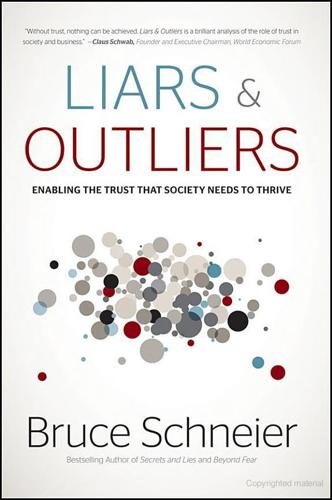
Liars and Outliers: How Security Holds Society Together
by
Bruce Schneier
Published 14 Feb 2012
attribute substitution Daniel Kahneman and Shane Frederick (2002), “Representativeness Revisited: Attribute Substitution in Intuitive Judgment,” in Thomas Gilovich, Dale Griffin, and Daniel Kahneman, eds., Heuristics and Biases: The Psychology of Intuitive Judgment, Cambridge University Press, 49–81. a lemons market George Akerlof (1970), “The Market for Lemons: Quality Uncertainty and the Market Mechanism,” Quarterly Journal of Economics, 83:488–500. George E. Hoffer and Michael D. Pratt (1987), “Used Vehicles, Lemons Markets, and Used Car Rules: Some Empirical Evidence,” Journal of Consumer Policy, 10:409–14. Steven E. Kaplan, Pamela B. Roush, and Linda Thorne (2007), “Andersen and the Market for Lemons in Audit Reports,” Journal of Business Ethics, 70:363–73. Globalization is making Rick Mullin (2011), “Shock to the System: Big Questions About Drug Safety Arise in the Wake of Rampant Supply-Chain Globalization,” Chemical & Engineering News, 89:11–20.

Culture and Prosperity: The Truth About Markets - Why Some Nations Are Rich but Most Remain Poor
by
John Kay
Published 24 May 2004
The insurer would sensibly raise the premium to match the characteristics of those who want policies. But this makes divorce insurance attractive only to those whose marriages are truly on the rocks. The cautious insurer must raise the premium still further. A divorce insurance market would be like the market for lemons. As in the wallet auction, there is no price at which a seller would wish to sell at which a buyer would wish to buy. So no market can exist, and there are no markets in divorce insurance. Divorce is extreme: the gap in knowledge between the potential insurer and the insured is insurmountable.
…
I have written books on the tax and benefit system (Dilnot, Kay, and Morris [1984]; Kay and King [1990]), and while I don't now hold all the views I did then, I still urge the reader to read (or better still buy) them. 7. See chapter 7, note 14. 8. See Easterly (200 1) for a discussion of some of the issues. {bibliography} • • • • • • • • • • • • • • • • • • • Adams,]. 1995. Risk. London: UCL Press. Akerlof, G. A. 1970. "The Market for Lemons: Quality Uncertainty and the Market Mechanism." Quarterly Journal ofEconomics 84 (August): 488-500. ---. 1984. An Economic Theorist's Book ofTales. Cambridge: Cambridge University Press. ---. 2001. Behavioural Macroeconomics and Macroeconomic Behaviour. Nobel Prize Lecture, Stockholm. Albert, M. 1990.
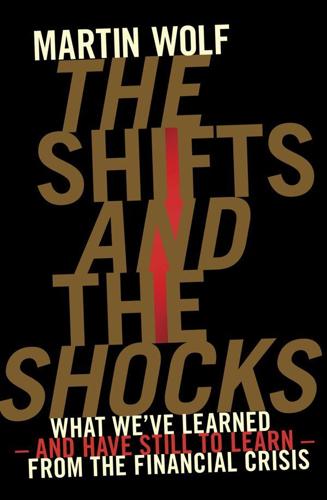
The Shifts and the Shocks: What We've Learned--And Have Still to Learn--From the Financial Crisis
by
Martin Wolf
Published 24 Nov 2015
Haldane, Brennan and Madouros, Figure 19. 27. See Independent Commission on Banking, Fig. 5.5, and Ben Broadbent, ‘Deleveraging’, 15 March 2012, http://www.bankofengland.co.uk/publications/Documents/speeches/2012/speech553.pdf, Figure 3. 28. Broadbent, ‘Deleveraging’, p. 4. 29. George Akerloff, ‘The Market for Lemons: Quality Uncertainty and the Market Mechanism’, Quarterly Journal of Economics, vol. 84, no. 3 (1970), pp. 488–500. 30. Derivative transactions include a variety of financial contracts, including structured debt obligations, swaps, futures, options, caps, floors, collars, forwards, and various combinations of these.
…
‘The World our Grandchildren will Inherit: The Rights Revolution and Beyond’, National Bureau of Economic Research Working Paper 17994, April 2012. www.nber.org. Admati, Anat and Martin Hellwig. The Bankers’ New Clothes: What’s Wrong with Banking and What to Do about It (Princeton: Princeton University Press, 2013). Ahamed, Liaquat. Lords of Finance: The Bankers who Broke the World (New York: Penguin, 2009). Akerloff, George. ‘The Market for Lemons: Quality Uncertainty and the Market Mechanism’, Quarterly Journal of Economics, vol. 84, no. 3 (1970), pp. 488–500. Alesina, Alberto and Silvia Ardagna. ‘Large Changes in Fiscal Policy: Taxes versus Spending’, Tax Policy and the Economy, vol. 24 (2010), ed. Jeffrey R. Brown (Cambridge, MA: National Bureau of Economic Research). http://www.nber.org/chapters/c11970.pdf?

Good Economics for Hard Times: Better Answers to Our Biggest Problems
by
Abhijit V. Banerjee
and
Esther Duflo
Published 12 Nov 2019
Knowing that, anyone who can get a recommendation would rather wait to get it (maybe some connection to a prospective employer will emerge; maybe a friend will start a business), and only those who know no one will ever recommend them (perhaps because they are actually not good workers) will go around knocking at doors to find a job. But then the employer would be right in refusing to talk to them. The market in this situation is unraveling. In 1970, George Akerlof, another future Nobel laureate, but then just a fresh PhD, wrote a paper, “The Market for ‘Lemons,’” in which he argued that the market for used cars might just shut down because people have an incentive to sell off their worst cars. That sets off the kind of self-confirming reasoning we saw in the case of newcomers to the labor market; the more suspicious buyers become of the old cars being sold, the less they will want to pay for them.50 The problem is the less they want to pay, the more the owners of good used cars will want to hold on to them (or sell their cars to friends who know and trust them).
…
Stiglitz, “Equilibrium Unemployment as a Worker Discipline Device,” American Economic Review 74, no. 3 (June 1984): 433–44. 45 Emily Breza, Supreet Kaur, and Yogita Shamdasani, “The Morale Effects of Pay Inequality,” Quarterly Journal of Economics 133, no. 2 (2018): 611–63. 46 Dustmann, Schönberg, and Stuhler, “Labor Supply Shocks, Native Wages, and the Adjustment of Local Employment.” 47 Patricia Cortés and Jessica Pan, “Foreign Nurse Importation and Native Nurse Displacement,” Journal of Health Economics 37 (2017): 164–80. 48 Kaivan Munshi, “Networks in the Modern Economy: Mexican Migrants in the U.S. Labor Market,” Quarterly Journal of Economics 118, no. 2 (2003): 549–99. 49 Lori Beaman, “Social Networks and the Dynamics of Labor Market Outcomes: Evidence from Refugees Resettled in the U.S.,” Review of Economic Studies 79, no. 1 (January 2012): 128–61. 50 George Akerlof, “The Market for ‘Lemons’: Quality Uncertainty and the Market Mechanism,” Quarterly Journal of Economics 84, no. 3 (1970): 488–500. 51 Referees and editors apparently found Akerlof’s paper difficult to understand. Essentially, the kind of circular reasoning that explains the unraveling requires a proper mathematical exposition to make sure it is watertight, and in 1970 this particular style of mathematical argumentation was unfamiliar to most economists.
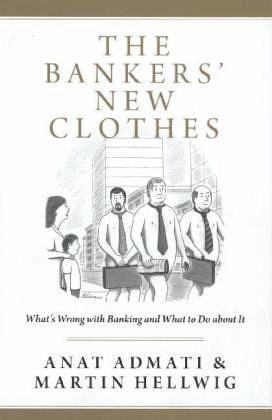
The Bankers' New Clothes: What's Wrong With Banking and What to Do About It
by
Anat Admati
and
Martin Hellwig
Published 15 Feb 2013
See Hellwig (2009) and the references given there, as well as Acharya et al. (forthcoming). 30. Any potential buyer of the loan would fear that the bank might be selling bad loans while keeping good ones. This is an example of what is known in economics as a “lemons problem,” after Akerlof’s (1970) Nobel Prize–winning analysis of what he called the market for “lemons.” Akerlof (1970) shows that markets in which sellers have better information than buyers may work very differently from ordinary markets. For example, in the market for used cars, potential buyers might require large discounts in compensation for the risk that sellers might be hiding important information about their cars and about their reasons for selling them.
…
Ahamed, Liaquat. 2009. Lords of Finance. New York: Penguin. Aiyar, Shekhar, Charles W. Calomiris, and Tomasz Wieladek. 2012. “Does Macro-Pru Leak? Evidence from a UK Policy Experiment.” NBER Working Paper 17822. National Bureau of Economic Research, Cambridge, MA. Akerlof, George A. 1970. “The Market for “Lemons”: Quality Uncertainty and the Market Mechanism.” Quarterly Journal of Economics 84 (3): 488–500. Akerlof, George A., and Paul M. Romer. 1993. “Looting: The Economic Underworld of Bankruptcy for Profit.” Brookings Papers on Economic Activity 1993 (2): 1–73. Alesina, Alberto, and Lawrence J.
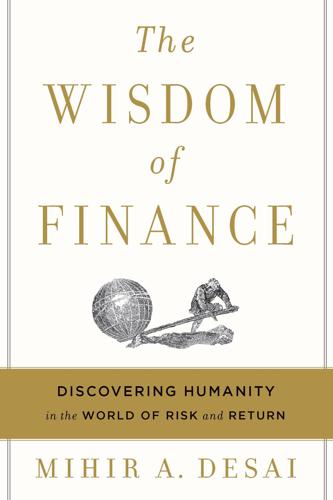
The Wisdom of Finance: Discovering Humanity in the World of Risk and Return
by
Mihir Desai
Published 22 May 2017
American Economic Review 53, no. 5 (June 1963): 941–73; Pauly, Mark V. “The Economics of Moral Hazard: Comment.” American Economic Review, part 1, 58, no. 3 (June 1968): 531–37; Arrow, Kenneth J. “The Economics of Moral Hazard: Further Comment.” American Economic Review, part 1, 58, no. 3 (June 1968): 537–39; Akerlof, George A. “The Market for Lemons: Quality Uncertainty and the Market Mechanism.” Quarterly Journal of Economics 84, no. 3 (August 1970): 488–500; Holmstrom, Bengt. “Moral Hazard and Observability.” Bell Journal of Economics 10, no. 1 (Spring 1979): 74–91; and Grossman, Sanford J., and Oliver D. Hart. “An Analysis of the Principal-Agent Problem.”

Why Information Grows: The Evolution of Order, From Atoms to Economies
by
Cesar Hidalgo
Published 1 Jun 2015
The existence of quantum information theory, however, does not invalidate the claim that classical information is a concept that works at a range of scales that is unusual for other theories. 4. Friedrich Hayek, “The Use of Knowledge in Society,” American Economic Review 35, no. 4 (1945): 519–530. 5. George A. Akerlof, “The Market for ‘Lemons’: Quality Uncertainty and the Market Mechanism,” Quarterly Journal of Economics 84, no. 3 (1970): 488–500. 6. Claude E. Shannon and Warren Weaver, The Mathematical Theory of Communication (Urbana: University of Illinois Press, 1963), 8. 7. Ibid., 31. 8. The formula for Boltzmann’s entropy (SB) is SB = kB ln(W) where kB is Boltzmann’s constant, which has units of energy over temperature, and W is the number of microstates corresponding to a given macrostate.
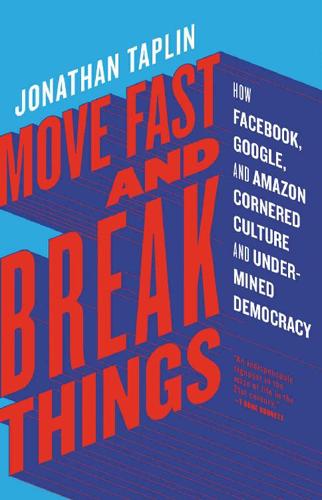
Move Fast and Break Things: How Facebook, Google, and Amazon Cornered Culture and Undermined Democracy
by
Jonathan Taplin
Published 17 Apr 2017
But TV has also spawned an age of reality shows in which Kim Kardashian and Donald Trump can overwhelm any cultural innovation that might exist. 8. In 1970 the Nobel Prize–winning economist George Akerlof published a paper that may help us understand the effect that the commoditization of media by Facebook, YouTube, and Google is having on our culture. The paper was called “The Market for ‘Lemons’: Quality Uncertainty and the Market Mechanism.” Akerlof says that when you buy a used car you assume the worst—it’s a lemon—in your negotiation stance. Thus the seller of a really good used car always loses out. No one will pay for more than average quality. The typical consumer of ad-supported media in our broadband universe is like that used-car buyer: he or she assumes that content is of average quality, and this inevitably gives rise to what Chris Anderson, in his book Free: The Future of a Radical Price, claims is a business strategy essential to companies’ survival—giving things away.

Humans as a Service: The Promise and Perils of Work in the Gig Economy
by
Jeremias Prassl
Published 7 May 2018
Following an update in the spring of 2017, the relevant description can now be found in clause 3: The Services comprise mobile applications and related services (each, an ‘Application’), which enable users to arrange and schedule transportation, logistics and/or delivery services and/or to purchase certain goods, including with third party providers of such services and goods under agreement with Uber or certain of Uber’s affiliates (‘Third Party Providers’). 10. George Akerlof, ‘The market for “lemons”: qualitative uncertainty and the market mechanism’ (1970) 84(3) Quarterly Journal of Economics 488. 11. Tom Slee, What’s Yours Is Mine: Against the Sharing Economy (O/R Books 2015). 12. Ibid., 100–1. 13. Ibid. This is confirmed by internal Uber documents, which suggest that, in 2014, fewer than 3 per cent of drivers were ‘at risk of being deactivated’ as a result of a rating below 4.6 stars (out of 5): James Cook, ‘Uber’s internal charts show how its driver-rating system actually works’, Business Insider UK (11 February 2015), http://uk.businessinsider.com/leaked-charts-show-how-ubers- driver-rating-system-works-2015–2, archived at https://perma.cc/5UPM-SWFN.

Reinventing Capitalism in the Age of Big Data
by
Viktor Mayer-Schönberger
and
Thomas Ramge
Published 27 Feb 2018
CHAPTER 3: MARKETS AND MONEY market volatility plummeted: Robert Jensen, “The Digital Provide: Information (Technology), Market Performance, and Welfare in the South Indian Fisheries Sector,” Quarterly Journal of Economics 122, no. 3 (August 2007), 879–924, https://academic.oup.com/qje/article-abstract/122/3/879/1879540/The-Digital-Provide-Information-Technology-Market. “The market is essentially an ordering mechanism”: Friedrich August von Hayek, “Coping with Ignorance,” Ludwig von Mises Memorial Lecture, Hillsdale College, Hillsdale, MI, July 1978. the market for used cars: George A. Akerlof, “The Market for ‘Lemons’: Quality Uncertainty and the Market Mechanism,” Quarterly Journal of Economics 84, no. 3 (August 1970), 488–500, http://qje.oxfordjournals.org/content/84/3/488.short. fewer peaches are offered for sale: Information asymmetries can also cause sellers to lose out when they undervalue their goods and services and a more informed buyer takes advantage of it.

What's Wrong With Economics: A Primer for the Perplexed
by
Robert Skidelsky
Published 3 Mar 2020
‘Conditional Cash Transfers and Their Impact on Child Work and Schooling: Evidence from the PROGRESA Program in Mexico’, Economía, Vol. 2 (1): 45–96. Solow, Robert (1985). ‘Economic History and Economics’, American Economic Review, Vol. 75 (2): 328–31. Chapter 6 Akerlof, George (1970). ‘The Market for Lemons: Quality, Uncertainty, and the Market Mechanism’, Quarterly Journal of Economics, Vol. 84 (3): 488–500. Akerlof, George and Shiller, Robert (2015). Phishing for Phools: The Economics of Manipulation and Deception, Princeton: Princeton University Press. Anderson, Jenny (2011). Economists in Love: Betsey Stevenson and Justin Wolfers, It’s not you, it’s the dishes.
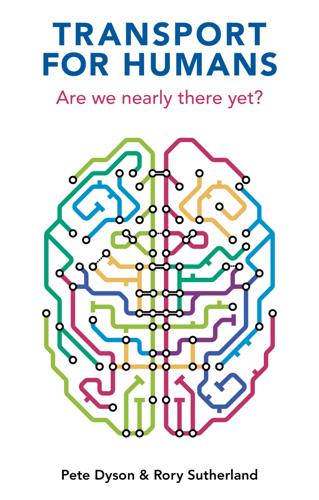
Transport for Humans: Are We Nearly There Yet?
by
Pete Dyson
and
Rory Sutherland
Published 15 Jan 2021
Variance has social and psychological meaning, bound up with our notions of reliability, stereotypes about travel and limited personal experience. Put another way, some people will never get a bus to a hospital appointment. This means there’s little sense in making a service more reliable if the perception of its reliability is already lagging behind reality. Economists call this the ‘market for lemons’: if the customer (traveller) knows some services are bad and others good, but they are unable to know which ones are which, they are inclined to act as though all services are bad. George Akerlof won the Nobel Memorial Prize in Economic Sciences for applying this analysis to second-hand cars, but this downward spiral should concern mass transit operators providing services of variable quality too.16 Social research is the first step to resolving this: talking to people helps transport planners understand motivations, fears and assumptions.

Open for Business Harnessing the Power of Platform Ecosystems
by
Lauren Turner Claire
,
Laure Claire Reillier
and
Benoit Reillier
Published 14 Oct 2017
Without a sufficient level of trust, perceived risks may outweigh the possible financial gains of using the platform. In fact, one of the key issues for platforms is that the producer has more information about what is being exchanged, sold or traded than the users. Using the example of cars, famous economic Nobel Prize winner George Akerlof wrote a very insightful paper titled ‘The Market for Lemons’. In it, he explains that if some sellers are selling cars in working order while others are selling broken cars (so-called ‘lemons’, presumably because they leave a bitter taste in the mouth of buyers) and that buyers have no way of knowing which is which, then the price of all the cars will converge towards the price of the worst possible car.
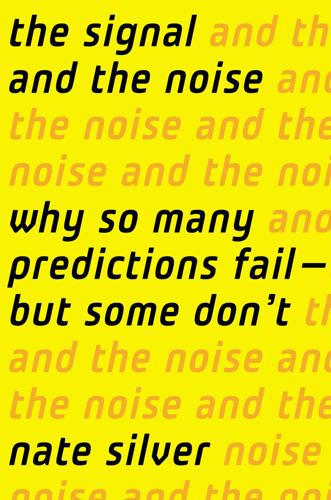
The Signal and the Noise: Why So Many Predictions Fail-But Some Don't
by
Nate Silver
Published 31 Aug 2012
The $85 billion it held in mortgage-backed securities in 2007 was about four times more than the underlying value of its capital, meaning that a 25 percent decline in their value would likely be enough to bankrupt the company.77 Ordinarily, investors would have been extremely reluctant to purchase assets like these—or at least they would have hedged their bets very carefully. “If you’re in a market and someone’s trying to sell you something which you don’t understand,” George Akerlof told me, “you should think that they’re selling you a lemon.” Akerlof wrote a famous paper on this subject called “The Market for Lemons”78—it won him a Nobel Prize. In the paper, he demonstrated that in a market plagued by asymmetries of information, the quality of goods will decrease and the market will come to be dominated by crooked sellers and gullible or desperate buyers. Imagine that a stranger walked up to you on the street and asked if you were interested in buying his used car.
…
David Miles, Bank of England, “Monetary Policy in Extraordinary Times,” speech given to the Centre for Economic Policy Research and London Business School, February 23, 2011. http://www.bankofengland.co.uk/publications/Documents/speeches/2011/speech475.pdf 77. Investopedia staff, “Case Study: The Collapse of Lehman Brothers,” Investopedia; April 2, 2009. http://www.investopedia.com/articles/economics/09/lehman-brothers-collapse.asp#axzz1bZ61K9wz. 78. George A. Akerlof, “The Market for ‘Lemons’: Quality Uncertainty and the Market Mechanism,” Quarterly Journal of Economics 84, no. 3 (Aug. 1970). http://sws.bu.edu/ellisrp/EC387/Papers/1970Akerlof_Lemons_QJE.pdf. 79. “Lehman Brothers F1Q07 (Qtr End 2/28/07) Earnings Call Transcript,” Seeking Alpha, Mar. 14, 2007. http://seekingalpha.com/article/29585-lehman-brothers-f1q07-qtr-end-2-28-07-earnings-call-transcript?

A Little History of Economics
by
Niall Kishtainy
Published 15 Jan 2017
Sellers of nags (worn-out old horses) use all sorts of tricks to make their horses look lively. These can have bad consequences, though: ‘On one side of the market are the tricksters. The other side avoids the tricksters. In the extreme, markets totally collapse.’ Akerlof became famous for a 1970 article, ‘The Market for Lemons’, which looked at the modern-day version of the horse-buyer’s dilemma: how to buy a second-hand car. The car that you’re thinking of buying from your local dealer might be a good one. It could, however, be a dud (a ‘lemon’), one that looks fine on the garage forecourt but is sure to break down if it’s driven more than a few miles down the road.
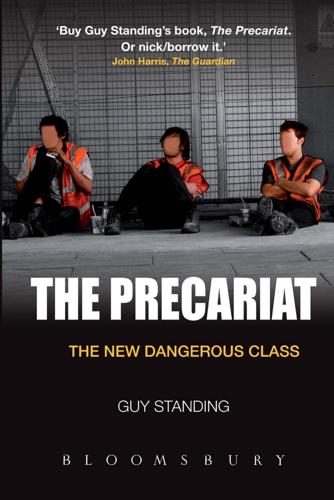
The Precariat: The New Dangerous Class
by
Guy Standing
Published 27 Feb 2011
If education is sold as an investment good, if there is an unlimited supply of certificates and if these do not yield the promised return, in terms of access to good jobs and high income with which to pay off debts incurred because 72 THE PRECARIAT they were nudged to buy more of the commodity, more entering the precariat will be angry and bitter. The market for lemons comes to mind. As does the old Soviet joke, in which the workers said, ‘They pretend to pay us, we pretend to work’. The education variant would be as follows: ‘They pretend to educate us, we pretend to learn’. Infantilising the mind is part of the process, not for the elite but for the majority.
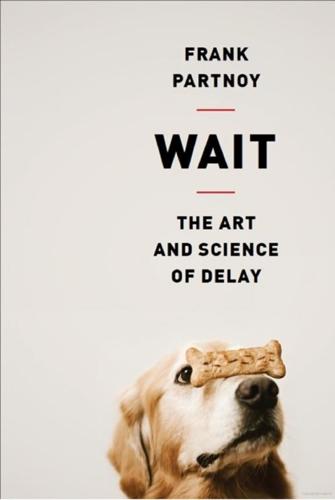
Wait: The Art and Science of Delay
by
Frank Partnoy
Published 15 Jan 2012
Akerlof and Stiglitz shared the 2001 Nobel Memorial Prize in Economic Sciences with Michael Spence for their work on information asymmetry, the idea that markets do not efficiently allocate resources when there is a large gap between the information available to sellers and buyers. Akerlof’s most famous paper—one of the most frequently cited papers in the history of economics—is George A. Akerlof, “The Market for Lemons: Quality Uncertainty and the Market Mechanism,” Quarterly Journal of Economics 84(3, 1970): 488–500. In this paper, Akerlof uses the market for used cars as an example of the “lemon effect”: where the quality of cars is low, the owners of good cars will not put their cars up for sale because buyers, who lack information, will assume those good cars are merely average.

Rethinking the Economics of Land and Housing
by
Josh Ryan-Collins
,
Toby Lloyd
and
Laurie Macfarlane
Published 28 Feb 2017
Adam, S., Chandler, D., Hood, A., Joyce, R. 2015. Social Housing in England: A Survey. London: Institute for Fiscal Studies. Aikman, David, Andrew G. Haldane, and Benjamin D. Nelson. 2014. ‘Curbing the Credit Cycle’. The Economic Journal 125 (585). doi:10.1111/ecoj.12113. Akerlof, George A. 1970. ‘The Market for “Lemons”: Quality Uncertainty and the Market Mechanism’. The Quarterly Journal of Economics 84 (3): 488–500. Allen, Kate and Anna Nicolaou. 2015. ‘Global Property Bubble Fears Mount as Prices and Yields Spike’. Financial Times, 16 April. https://next.ft.com/content/7ba6556e-e28d-11e4-ba33-00144feab7de.
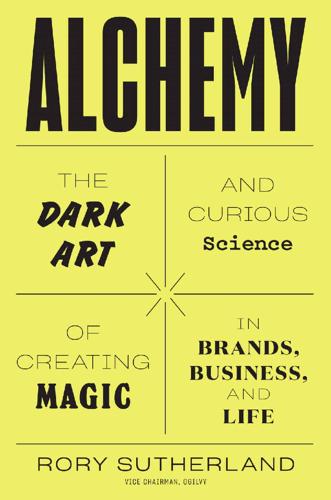
Alchemy: The Dark Art and Curious Science of Creating Magic in Brands, Business, and Life
by
Rory Sutherland
Published 6 May 2019
It may correct itself if better boards arise, or if a shrewd company such as Samsung cannily attaches its name to the best. Noticeably, brands such as Juul and Vype are starting to emerge in the similarly haphazard vaping market. In many ways, expensive advertising and brands arise as a solution to a problem identified by George Akerlof in his 1970 paper ‘The Market for Lemons’ in the Quarterly Journal of Economics. The problem is known as ‘information asymmetry’, whereby the seller knows more about what he is selling than the buyer knows about what he is buying. This lesson was learned the hard way in Eastern Bloc countries under communism; brands were considered un-Marxist, so bread was simply labelled ‘bread’.

The Undercover Economist: Exposing Why the Rich Are Rich, the Poor Are Poor, and Why You Can Never Buy a Decent Used Car
by
Tim Harford
Published 15 Mar 2006
The tax bill paid by American drivers from the US Department of Transportation, http://www.fhwa.dot.gov/ohim/2000hfbt.pdf. The effect of London’s congestion charge on traffic levels is described in “Congestion Charging Six Months On,” Transport for London, October 2003. Chapter 5 The classic article on lemons and asymmetric information is George Akerlof, “The Market for ‘Lemons’: Quality Uncertainty and the Market Mechanism,” Quarterly Journal of Economics (August 1970). Akerlof ’s book An Economic Theorist’s Book of Tales (Cambridge: Cambridge University Press, 1984) contains many of his most interesting papers up to that date—not only the lemons paper but, for instance, economic theories of the caste system.
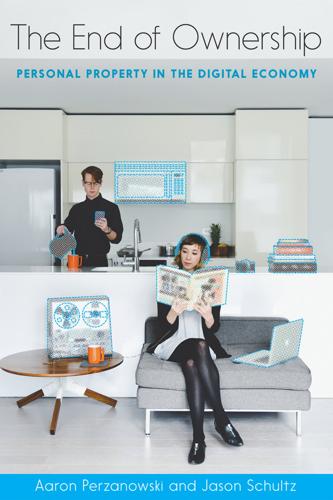
The End of Ownership: Personal Property in the Digital Economy
by
Aaron Perzanowski
and
Jason Schultz
Published 4 Nov 2016
Mike Masnick, “Supreme Court Chief Justice Admits He Doesn’t Read Online EULAs or Other ‘Fine Print,’” Techdirt, October 22, 2010, https://www.techdirt.com/articles/20101021/02145811519.shtml, accessed July 7, 2015. 8. Mike Masnick, “Proof That (Almost) No One Reads End User License Agreements,” Techdirt, February 23, 2005, https://www.techdirt.com/articles/20050223/1745244.shtml, accessed July 7, 2015. 9. George A. Akerlof, “The Market for ‘Lemons’: Quality Uncertainty and the Market Mechanism,” Quarterly Journal of Economics 84, no. 3 (August 1970): 488–500, http://www.jstor.org/stable/1879431, accessed July 7, 2015. 10. Services like Carfax have addressed this problem by making information about specific vehicles more readily available.
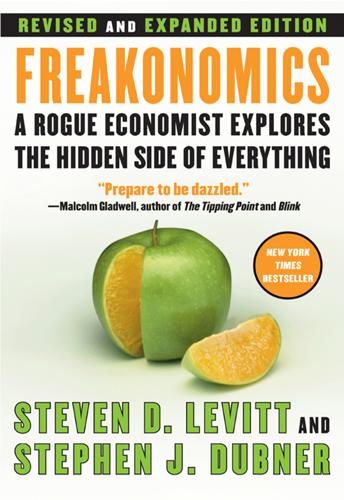
Freakonomics: A Rogue Economist Explores the Hidden Side of Everything
by
Steven D. Levitt
and
Stephen J. Dubner
Published 11 Apr 2005
THE BRAND-NEW USED-CAR CONUNDRUM: This thesis, and indeed much of what we think today about “asymmetric information,” stems from a paper that George A. Akerlof wrote during his first year as an assistant professor at Berkeley in 1966–67. It was rejected three times—two of the journals told Akerlof that they “did not publish papers on topics of such triviality,” as he later recalled—before being published as George A. Akerlof, “The Market for ‘Lemons’: Quality Uncertainty and the Market Mechanism,” Quarterly Journal of Economics, August 1970. Some thirty years later, the paper won Akerlof the Nobel Prize in Economics; he is widely considered the nicest man to have ever won the award. THE ENRON TAPES: As of this writing, the tapes could be heard on http:// www.cbsnews.com/stories/2004/06/01/eveningnews/main6_20626.shtml.
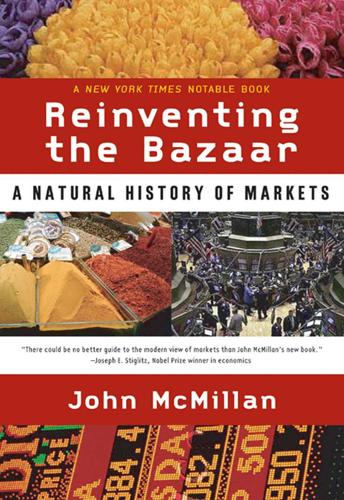
Reinventing the Bazaar: A Natural History of Markets
by
John McMillan
Published 1 Jan 2002
Aghion, Philippe, Caroli, Eve, and Garcia-Penalosa, Cecilia. 1999. “Inequality and Economic Growth: The Perspective of the New Growth Theories.” Journal of Economic Literature 37, 1615–1660. Aghion, Philippe, and Tirole, Jean. 1994. “The Management of Innovation.” Quarterly Journal of Economics 109, 1185–1210. Akerlof, George. 1970. “The Market for ‘Lemons’: Quality Uncertainty and the Market Mechanism.” Quarterly Journal of Economics 84, 488–500. Albanesi, Stefania. 2000. “Inflation and Inequality.” Unpublished, Northwestern University, Chicago. Alesina, Alberto. 1997. “The Political Economy of High and Low Growth.” In B. Pleskovic and J.
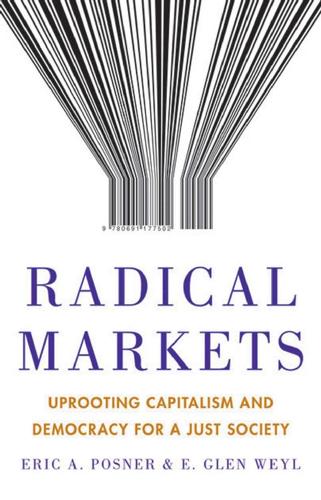
Radical Markets: Uprooting Capitalism and Democracy for a Just Society
by
Eric Posner
and
E. Weyl
Published 14 May 2018
Note that this would create a highly liquid market in home refinancings. 50. A team of researchers led by Nikhil Naik is already using image analysis to conduct automated property assessments for real estate, so this idea is not as farfetched as it may at first sound. 51. George A. Akerlof, The Market for “Lemons”: Quality, Uncertainty and the Market Mechanism, 84 Quarterly Journal of Economics 488 (1970); Michael Spence, Job Market Signaling, 87 Quarterly Journal of Economics 355 (1973). 52. Richard Thaler, Toward a Positive Theory of Consumer Choice, 1 Journal of Economics, Behavior, and Organizations 39 (1980). 53.

Cheap: The High Cost of Discount Culture
by
Ellen Ruppel Shell
Published 2 Jul 2009
Geertz, an anthropologist, spent decades observing bazaar life in Morocco and Indonesia. 4 sell for more than thirteen times their production price: See Dana Thomas, Deluxe: How Luxury Lost Its Luster (New York: Penguin, 2008) This delicious exposé of the real cost and decline of luxury reveals—among many, many other things, that the average markup of a handbag is ten to twelve times its production cost. A Vuitton bag, however, is marked up as much as thirteen times. 5 in the same terms as he to them: Clifford Geertz, “Bazaar Economy.” 6 illustrates the problem with a thought experiment: George A. Akerlof, “The Market for ‘Lemons’: Quality Uncertainty and the Market Mechanism,” Quarterly Journal of Economics 84, no. 3 (1970): 488-500. CHAPTER ONE: DISCOUNT NATION 7 or generate even as much power as a horse: Robert Kanigel, The One Best Way: Frederick Winslow Taylor and the Enigma of Efficiency (New York: Viking, 1997), 95-96.

A Demon of Our Own Design: Markets, Hedge Funds, and the Perils of Financial Innovation
by
Richard Bookstaber
Published 5 Apr 2007
Extending this good car/bad car case to where there is a continuum of quality of cars, we might find that not only do the bad cars drive out the good cars, but the really bad cars drive out the moderately bad ones, and so on, until no market exists at all. This basic argument, presented in George Akerlof’s famous paper, “The Market for ‘Lemons’: Quality Uncertainty and the Market Mechanism” (Quarterly Journal of Economics, August 1970, pages 488–500), was the basis for his award of the Nobel Prize in 2001. 6. Carol J. Loomis’s Fortune article, “Warren Buffett’s Wild Ride at Salomon” (October 27, 1997), provides an insider’s view of Warren Buffett’s reaction to this scandal.
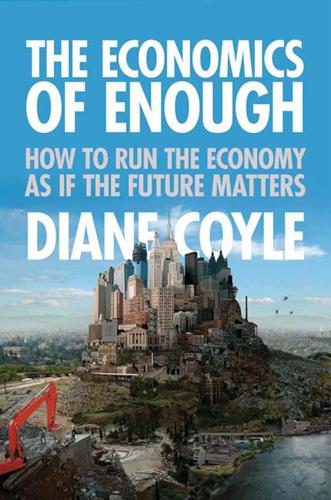
The Economics of Enough: How to Run the Economy as if the Future Matters
by
Diane Coyle
Published 21 Feb 2011
Acemoglu, Daron, and James Robinson. 2008. “The Role of Institutions in Growth and Development.” Working Paper No. 10. Washington, DC: Commission on Growth and Development. Achenbach, Joel. 2010. “The National Debt and Washington’s Deficit of Will.” Washington Post, 15 April. Akerlof, George. 1970. “The Market for ‘Lemons’: Quality Uncertainty and the Market Mechanism.” Quarterly Journal of Economics 84:3, pp. 488–500. Alesina, Alberto, and Edward Glaeser. 2006. Fighting Poverty in the US and Europe: A World of Difference. Oxford: Oxford University Press. Alesina, Alberto, Edward Glaeser, and Bruce Sacerdote. 2001.

Finance and the Good Society
by
Robert J. Shiller
Published 1 Jan 2012
Guaranteed to Fail: Fannie Mae, Freddie Mac, and the Debacle of Mortgage Finance. Princeton, NJ: Princeton University Press. Adelino, Manuel, Antoinette Schoar, and Felipe Severino. 2011. “Credit Supply and House Prices: Evidence from Mortgage Market Segmentation.” Unpublished paper, Tuck School, Dartmouth College. Akerlof, George A. 1970. “The Market for ‘Lemons’: Quality Uncertainty and the Market Mechanism.” Quarterly Journal of Economics 84(3):488–500. ———. 1976. “The Economics of Caste and of the Rat Race and Other Woeful Tales.” Quarterly Journal of Economics 90(4):599–617. Akerlof, George A., and Rachel E. Kranton. 2010. Identity Economics: How Our Identities Shape Our Work, Wages, and Well-Being.
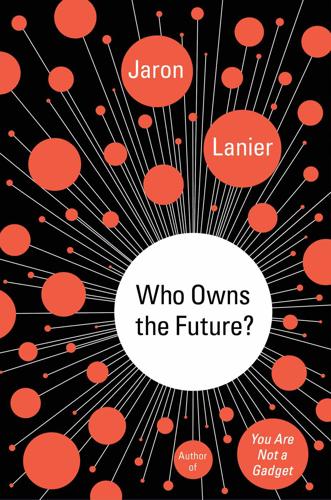
Who Owns the Future?
by
Jaron Lanier
Published 6 May 2013
This is an instance in which a classic problem in pre-digital markets should have been put to rest to a significant degree by digital designs. The supposed transparency of the way we have structured our present information economy turned out to be unusable. The problem in question is known as the “Market for Lemons,” after the title of the famous paper, which helped earn its author, George Akerlof, a Nobel Prize13 in Economics. The lemons in the paper were not from the lemonade stand we encountered earlier, but were instead crummy used cars for sale. The paper detailed how a prevalence of bad used cars distorted markets through the mechanism of information asymmetry.
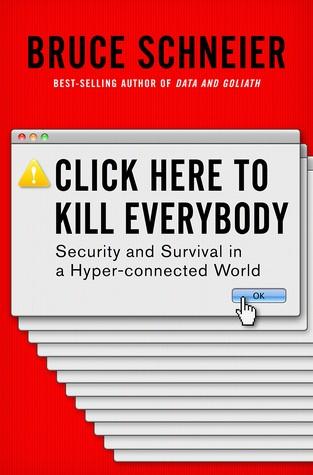
Click Here to Kill Everybody: Security and Survival in a Hyper-Connected World
by
Bruce Schneier
Published 3 Sep 2018
Craig Silverman (24 Jul 2015), “7 creepy baby monitor stories that will terrify all parents,” BuzzFeed, https://www.buzzfeed.com/craigsilverman/creeps-hack-baby-monitors-and-say-terrifying-thing. 133Many brands are hackable: Carl Franzen (4 Aug 2017), “How to find a hack-proof baby monitor,” Lifehacker, https://offspring.lifehacker.com/how-to-find-a-hack-proof-baby-monitor-1797534985. 133“[Our] technology transmits a secure”: Amazon.com (accessed 24 Apr 2018), “VTech DM111 audio baby monitor with up to 1,000 ft of range, 5-level sound indicator, digitized transmission & belt clip,” https://www.amazon.com/VTech-DM111-Indicator-Digitized-Transmission/dp/B00JEV5UI8/ref=pd_lpo_vtph_75_bs_lp_t_1. 134I couldn’t tell the good from the bad: I found one security assessment of a few brands. Mark Stanislav and Tod Beardsley (29 Sep 2015), “Hacking IoT: A case study on baby monitor exposure and vulnerabilities,” Rapid7, https://www.rapid7.com/docs/Hacking-IoT-A-Case-Study-on-Baby-Monitor-Exposures-and-Vulnerabilities.pdf. 134“lemons market”: George A. Akerlof (1 Aug 1970), “The market for ‘lemons’: Quality uncertainty and the market mechanism,” Quarterly Journal of Economics 84, no. 3, https://academic.oup.com/qje/article-abstract/84/3/488/1896241. 134The result is that insecure products: Bruce Schneier (19 Apr 2007), “How security companies sucker us with lemons,” Wired, https://www.wired.com/2007/04/security matters-0419. 134There is nothing like this today: One study estimated it would take average consumers 244 hours/year to read all of the privacy policies they agree to.
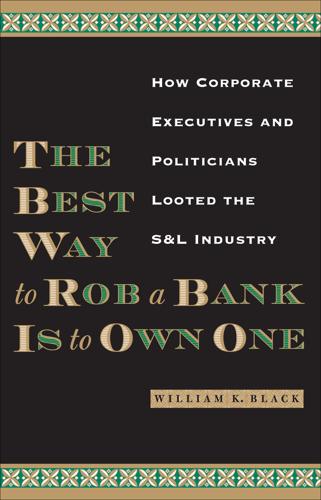
The Best Way to Rob a Bank Is to Own One: How Corporate Executives and Politicians Looted the S&L Industry
by
William K. Black
Published 31 Mar 2005
Second wife of Jim Wright. WRIGHT, JAMES “JIM,” JR. (D-TX). Speaker of the House, 1987–1989. WYLIE, CHALMERS P. (R-OH). Member of the House Banking Committee. REFERENCES Adams, Jim Ring. 1990. The Big Fix: Inside the S&L Scandal, New York: John Wiley & Sons. Akerlof, George. 1970. “The Market for ‘Lemons’: Quality, Uncertainty, and the Market Mechanism.” Quarterly Journal of Economics 84 (3):488–500. Akerlof, George, and Paul M. Romer. 1993. “Looting: The Economic Underworld of Bankruptcy for Profit.” Brookings Papers on Economic Activity 2:1–73. American Banker, 1987. Article dated February 10.

Competition Overdose: How Free Market Mythology Transformed Us From Citizen Kings to Market Servants
by
Maurice E. Stucke
and
Ariel Ezrachi
Published 14 May 2020
,” BBC News, June 8, 2015, https://www.bbc.co.uk/news/health-32786537; “Air Quality on Planes: Aerotoxic Syndrome,” Economist, February 7, 2013, https://www.economist.com/gulliver/2013/02/07/aerotoxic-syndrome; Association of Flight Attendants-CWA, “Issues: Aircraft Air Quality—Protecting Against Contaminants,” accessed April 12, 2019, http://www.afacwa.org/aircraft_air_quality. 77.George A. Akerlof, “The Market for ‘Lemons’: Quality Uncertainty and the Market Mechanism,” Quarterly Journal of Economics 84, no. 3 (August 1970): 488–500, https://doi.org/10.2307/1879431. 78.Healthline, “Experts Agree: Sugar Might Be as Addictive as Cocaine,” accessed April 12, 2018, https://www.healthline.com/health/food-nutrition/experts-is-sugar-addictive-drug#1. 79.Nell Boeschenstein, “How the Food Industry Manipulates Taste Buds with ‘Salt Sugar Fat,’” NPR, February 26, 2013, https://www.npr.org/sections/thesalt/2013/02/26/172969363/how-the-food-industry-manipulates-taste-buds-with-salt-sugar-fat. 80.Boeschenstein, “How the Food Industry Manipulates Taste Buds.”
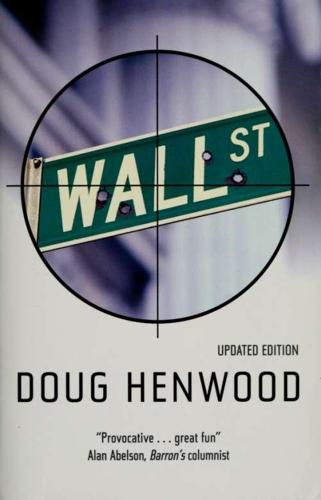
Wall Street: How It Works And for Whom
by
Doug Henwood
Published 30 Aug 1998
"Capital Structure After Debt Restructurings: Why Do Firms Remain Overleveraged?," Dartmouth College mimeo Qune). Aghion, Philippe, Oliver Hart, and John Moore (1992). "The Economics of Bankruptcy Reform," Massachusetts Institute of Technology Economics Department Working Paper 92-11, May. Akerlof, George (1970). "The Market for Lemons: Quality Uncertainty and the Market Mechanism." Quarterly Journal of Economics 84 (August), pp. 488-500. Alberts, William W., and Nikhil P. Varaiya (1989). "Assessing the Profitability of Growth by Acquisition," International Journal of Industrial Organization!, pp. 133-149. Ando, Albert, and Franco Modigliani (1963).

India's Long Road
by
Vijay Joshi
Published 21 Feb 2017
Aiyar, S. (2016), ‘Dodgy Statistics and Global Tempests Can Sink Budget Calculations’, Economic Times, 2 March. Aiyar, Y., and M. Walton (2014), ‘Rights, Accountability and Citizenship: Examining India’s Emerging Welfare State’, Accountability Initiative, Working Paper, Centre for Policy Research, New Delhi. Akerlof, G. (1970), ‘The Market for Lemons: Quality Uncertainty and the Market Mechanism’, Quarterly Journal of Economics, Vol. 84(3), 488–500. Alfaro, L., and A. Chari (2010), ‘India Transformed? Insights from the Firm Level 1988–2005’, India Policy Forum 2009/10, Vol. 6, 153–224. Amin, A. (2009), ‘Labour Regulation and Employment in India’s Retail Stores’, Journal of Comparative Economics, Vol. 37(1), 47–61. 324 Anand, R., D.

Them And Us: Politics, Greed And Inequality - Why We Need A Fair Society
by
Will Hutton
Published 30 Sep 2010
Steinmueller and Juan Mateos-Garcia (2009) ‘Rebooting Britain’, Nesta Policy Briefing. 6 Rohit Talwar and Tim Hancock (2010) ‘The Shape of Jobs to Come: Possible New Careers Emerging from Advances in Science and Technology (2010–2030)’, report, Fast Future. 7 Ian Brinkley (2008) ‘The Knowledge Economy: How Knowledge is Reshaping the Economic Life of Nations’, report, Work Foundation. 8 Robert Nozick (1974) Anarchy, State, and Utopia, Basic Books, p. 169. 9 Liam Murphy and Thomas Nagel (2002) The Myth of Ownership: Taxes and Justice, Harvard University Press. 10 Will Hutton and Philippe Schneider (2008) ‘The Failure of Market Failure: Towards a 21st Century Keynesianism’, Nesta Provocation. 11 George Akerlof (1970) ‘The Market for Lemons: Quality Uncertainty and the Market Mechanism’, Quarterly Journal of Economics 84 (3): 488–500. 12 Nava Asraf, Colin Camerer and George Loewenstein (2005) ‘Adam Smith,Behavioral Economist’, Journal of Economic Perspectives 19 (3): 131–45. 13 John Coates and Joe Herbert (2008) ‘Endogenous Steroids and Financial Risk Taking on a London Trading Floor’, Proceedings of the National Academy of Sciences 105: 6167–72. 14 Technically, this can be understood as rational behaviour. 15 Studies have sought to limit attention to one potential bias at a time; but several biases might plausibly explain behaviour.
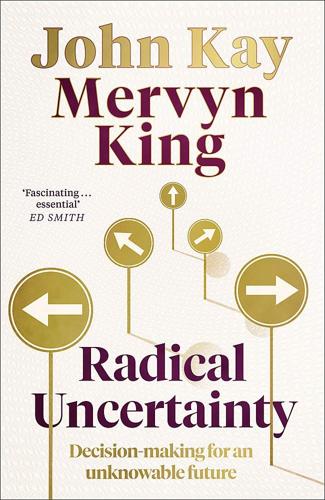
Radical Uncertainty: Decision-Making for an Unknowable Future
by
Mervyn King
and
John Kay
Published 5 Mar 2020
Since 1870’, American Economic Review , Vol. 46, No. 2 (1956), 5–23 Adams, A. and Levell, P., ‘Measuring Poverty When Inflation Varies Across Households’, Joseph Rowntree Foundation (2014) Aikman, D. et al., ‘Taking Uncertainty Seriously: Simplicity Versus Complexity in Financial Regulation’, Bank of England Financial Stability Paper Number 28 (2014) Aitken, I., ‘Obituary: Viscount Whitelaw of Penrith’, Guardian (2 July 1999) Akerlof, G. A., ‘The Market for “Lemons”: Quality Uncertainty and the Market Mechanism’, Quarterly Journal of Economics , Vol. 84, No. 3 (1970), 488–500 Aktipis, C. A., Cronk, L. and de Aguiar, R., ‘Risk-Pooling and Herd Survival: An Agent-Based Model of a Maasai Gift-Giving System’, Human Ecology , Vol. 39, No. 2 (2011), 131–40 Alchian, A.

Termites of the State: Why Complexity Leads to Inequality
by
Vito Tanzi
Published 28 Dec 2017
Afonso, Antonio, Ludger Schuknecht, and Vito Tanzi, 2005, “Public Sector Efficiency: An International Comparison,” Public Choice 123, pp. 321–347. 2010, “Public Sector Efficiency: Evidence for New EU Member States and Emerging Markets,” Applied Economics 42 (17), pp. 2147–2164. Ahamed, Liaquat, 1999, Lords of Finance: The Bankers Who Broke the World (New York: The Penguin Press). Akerlof, George A., 1970, “The Market for ‘Lemons’: Quality, Uncertainty and the Market Mechanism,” Quarterly Journal of Economics 84 (3) (August), pp. 488–500. Akerlof, George A. and Robert Shiller, 2009, Animal Spirits: How Human Psychology Drives the Economy: And Why It Matters for Global Capitalism (Princeton, NJ: Princeton University Press). 2015, Phishing for Phools: The Economics of Manipulation and Deception (Princeton, NJ: Princeton University Press).

Big Data and the Welfare State: How the Information Revolution Threatens Social Solidarity
by
Torben Iversen
and
Philipp Rehm
Published 18 May 2022
“Dependency Status and Demand for Social Insurance: Evidence from Experiments and Surveys.” Political Science Research and Methods 5(1): 31–53. Ahlquist, John S. and Margaret Levi. 2013. In the Interest of Others: Organizations and Social Activism. Princeton University Press. Akerlof, George A. 1970. “The Market for ‘Lemons’: Quality Uncertainty and the Market Mechanism.” The Quarterly Journal of Economics 84(3): 488–500. Aldrich, John. 1993. “Rational Choice and Turnout.” American Journal of Political Science 37(1): 246–78. 1995. Why Parties? The Origin and Transformation of Political Parties in America. Chicago University Press.

Unelected Power: The Quest for Legitimacy in Central Banking and the Regulatory State
by
Paul Tucker
Published 21 Apr 2018
The Decline and Fall of the American Republic. Second Tanner Lecture on Human Values. Cambridge, MA: Belknap Press of Harvard University Press, 2010. Adler, Matthew D. “Justification, Legitimacy, and Administrative Governance.” Symposium: The Reformation of American Administrative Law 3 (2005). Akerlof, George A. “The Market for ‘Lemons’: Quality Uncertainty and the Market Mechanism.” Quarterly Journal of Economics 84, no. 3 (1970): 488–500. Alesina, Alberto, and Paola Giuliano. “Culture and Institutions.” Journal of Economic Literature 53, no. 4 (2014): 898–944. Alesina, Alberto, and Howard Rosenthal. “A Theory of Divided Government.”

On the Edge: The Art of Risking Everything
by
Nate Silver
Published 12 Aug 2024
Tell your friend who’s bragging about his Vegas trip that he’s not actually going to Las Vegas; the airport and the Strip are located south of the city limits in the unincorporated towns of Paradise and Winchester. Clark County includes these towns and is essentially coterminous with the Las Vegas metro area. *10 The original 1960 film, not the George Clooney remake. *11 This bears some resemblance to the economic concept known as the “market for lemons,” where there’s a market failure because of information asymmetries. It’s hard to tell if a used car is defective until you’ve bought it—a test drive usually won’t be enough to surface all problems and tell you whether it’s a lemon. Similarly, the small sample of play you get at a particular casino won’t be statistically sufficient to tell you whether you’ve been cheated.

Bourgeois Dignity: Why Economics Can't Explain the Modern World
by
Deirdre N. McCloskey
Published 15 Nov 2011
“Do Ideas Matter for Economics Policy? Evidence from Newspaper Coverage of Balance of Payments Crises in India.” https://uic.academia.edu/Departments/Economics/Documents. Adhia, Nimish. 2013. “The Role of Ideological Change in India’s Economic Liberalization.” Journal of Socioeconomics 44:103–111. Akerlof, George A. 1970. “The Market for ‘Lemons’: Quality Uncertainty and the Market Mechanism.” Quarterly Journal of Economics 84:488–500. Akerlof, George A., and Robert J. Shiller. 2009. Animal Spirits: How Human Psychology Drives the Economy, and Why It Matters for Global Capitalism. Princeton, NJ: Princeton University Press. Alfani, Guido. 2013.

The Rise and Fall of American Growth: The U.S. Standard of Living Since the Civil War (The Princeton Economic History of the Western World)
by
Robert J. Gordon
Published 12 Jan 2016
“Jobs and the Clever Robot,” Wall Street Journal, February 25, pp. A1, A10. Agar, Jon. (2013). Constant Touch: A Global History of the Mobile Phone. London: Icon. Agus, David B. (2012). “The 2000-Year-Old Wonder Drug,” The New York Times, December 12, p. A31. Akerlof, George A. (1970). “The Market for ‘Lemons’: Quality Uncertainty and the Market Mechanism,” Quarterly Journal of Economics 84, no. 3 (August): 488–500. Alexander, June Granatir. (2009). Daily Life in Immigrant America, 1870–1920: How the Second Great Wave of Immigrants Made Their Way in America. Chicago, IL: Ivan R. Dee. Alexopoulos, Michell, and Cohen, Jon. (2009).

Engineering Security
by
Peter Gutmann
id=4695350. [425] “Multiple OpenSSL signature verification API misuse”, oCERT Advisory 2008-016, 7 January 2009, http://www.ocert.org/advisories/ocert-2008016.html. [426] “Incorrect checks for malformed signatures”, OpenSSL Advisory 20090107, 7 January 2009, http://www.openssl.org/news/secadv_20090107.txt. [427] “SSL certificate fails to adhere to basic constraints and PCI compliance”, ‘pbz’, 29 October 2011, http://security.stackexchange.com/questions/8492/ssl-certificate-fails-to-adhere-to-basicconstraints-and-pci-compliance. [428] “SSL Certificate Fails to Adhere to Basic Constraints / Key Usage Extensions”, discussion thread at http://support.godaddy.com/groups/community/forum/topic/ssl-certificate-fails-to-adhere-tobasic-constraints-key-usage-extensions, October/November 2011. [429] “The Market for ‘Lemons’: Quality Uncertainty and the Market Mechanism”, George Akerlof, Quarterly Journal of Economics, Vol.84, No.3 (August 1970), p.488. [430] “Markets in Imperfect Information — Lemons, Limes and Silver Bullets”, Ian Grigg, 14 May 2006, http://www.financialcryptography.com/mt/archives/000721.html. [431] “The Market for Silver Bullets”, Ian Grigg, 2 March 2008, http://iang.org/papers/market_for_silver_bullets.html.